Vaulted ceilings can transform any space, infusing rooms with a sense of grandeur, light, and architectural intrigue. By drawing the eye upward, they create the illusion of increased square footage and openness, making both large and compact areas feel airy and expansive. Whether enhanced with rustic wood beams, dramatic paint choices, or innovative lighting, vaulted ceilings offer endless opportunities for personal expression and functional design. From kitchens and living rooms to bathrooms and outdoor patios, these elevated features can be tailored to suit modern, traditional, coastal, or industrial motifs. The following 20 ideas will guide you through creative ways to maximize vaulted ceilings’ impact, combining aesthetics and practicality to elevate your home’s overall ambiance.
1. Whitewashed Vaulted Ceiling to Enhance Brightness
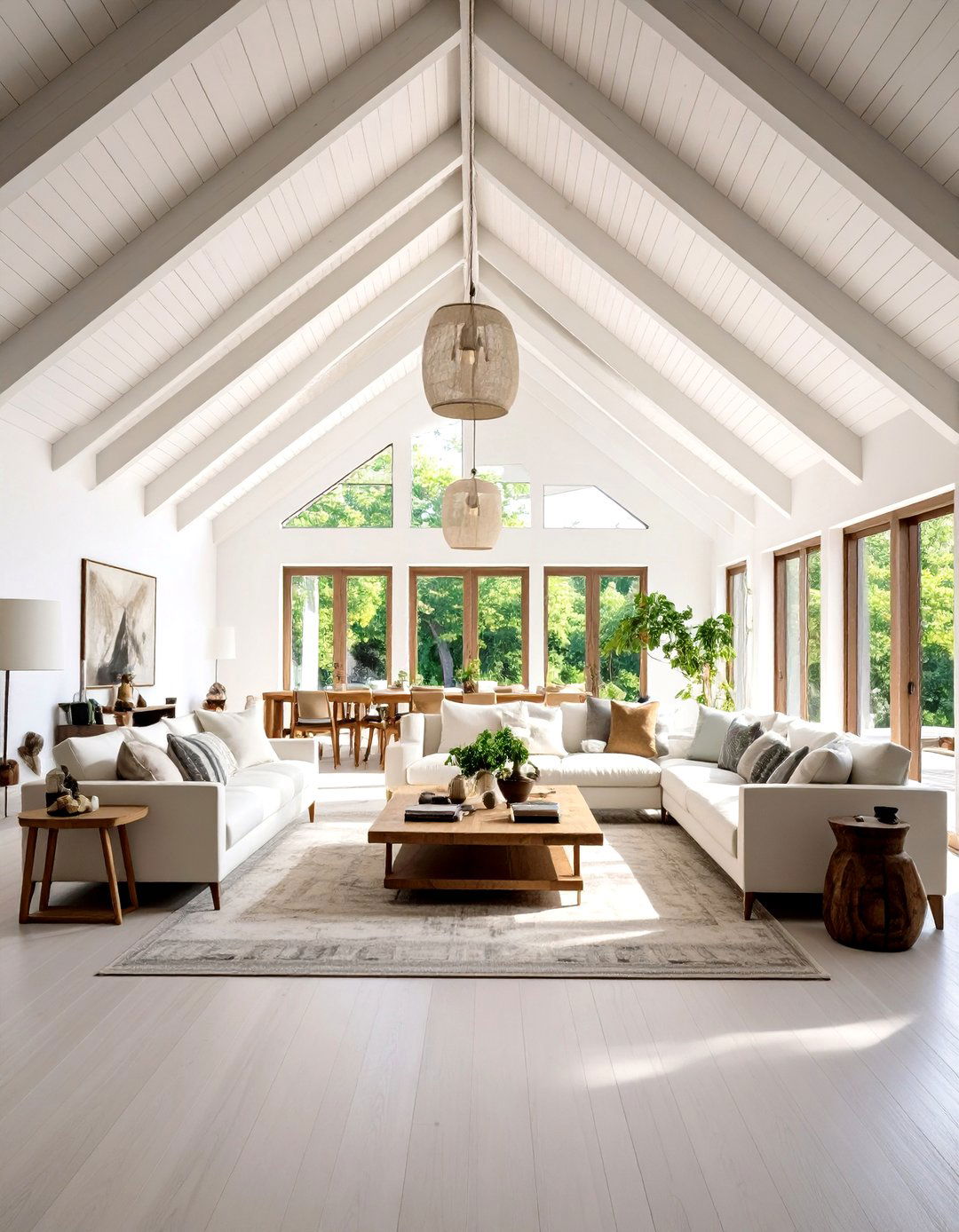
Painting a vaulted ceiling in crisp white or a subtle off-white can reflect natural light throughout the room, making spaces feel brighter and larger. This approach works especially well in rooms with ample windows, as the white surface amplifies daylight to reduce the reliance on artificial lighting. For smaller rooms or those with limited natural light, whitewashing the ceiling prevents the soaring height from feeling cavernous, instead imparting an airy, serene atmosphere. This technique also provides a neutral backdrop that allows furniture, artwork, and architectural details to stand out without competing with a busy ceiling treatment.
2. Exposed Wooden Beams for Rustic Charm
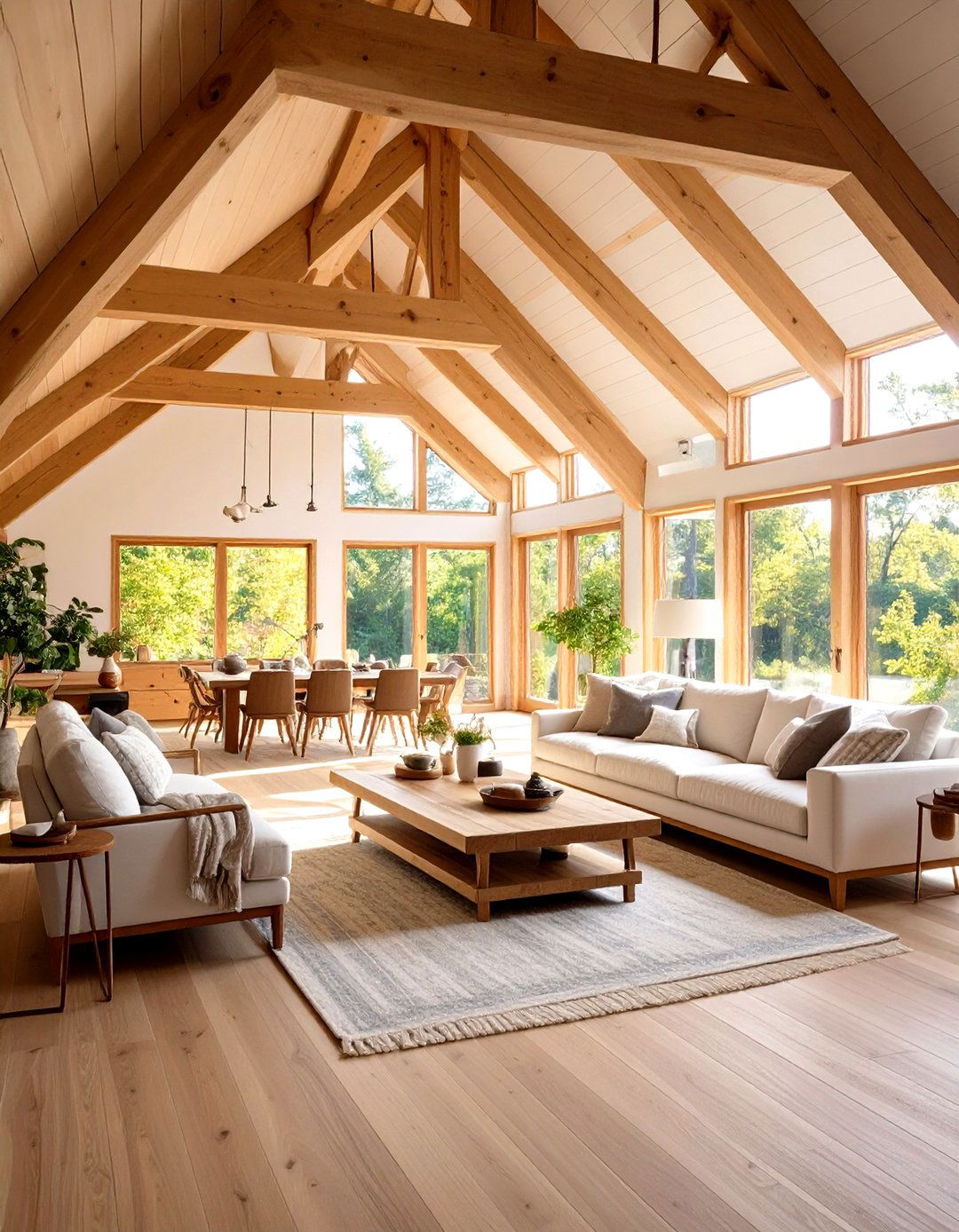
Incorporating exposed timber beams into a vaulted ceiling instantly adds warmth and a rustic character to any space. Natural maple or knotty pine beams introduce golden hues and texture that complement both farmhouse and modern-rustic interiors. The contrast between smooth ceiling planks and rough-hewn beams emphasizes structural depth, drawing attention to the ceiling’s shape. Beams can be left in their natural finish or stained to match existing woodwork, creating cohesiveness. For a subtler look, faux wood beams made of lightweight materials can mimic the charm of real timber without the added weight or cost.
3. Statement Chandeliers and Pendant Lighting
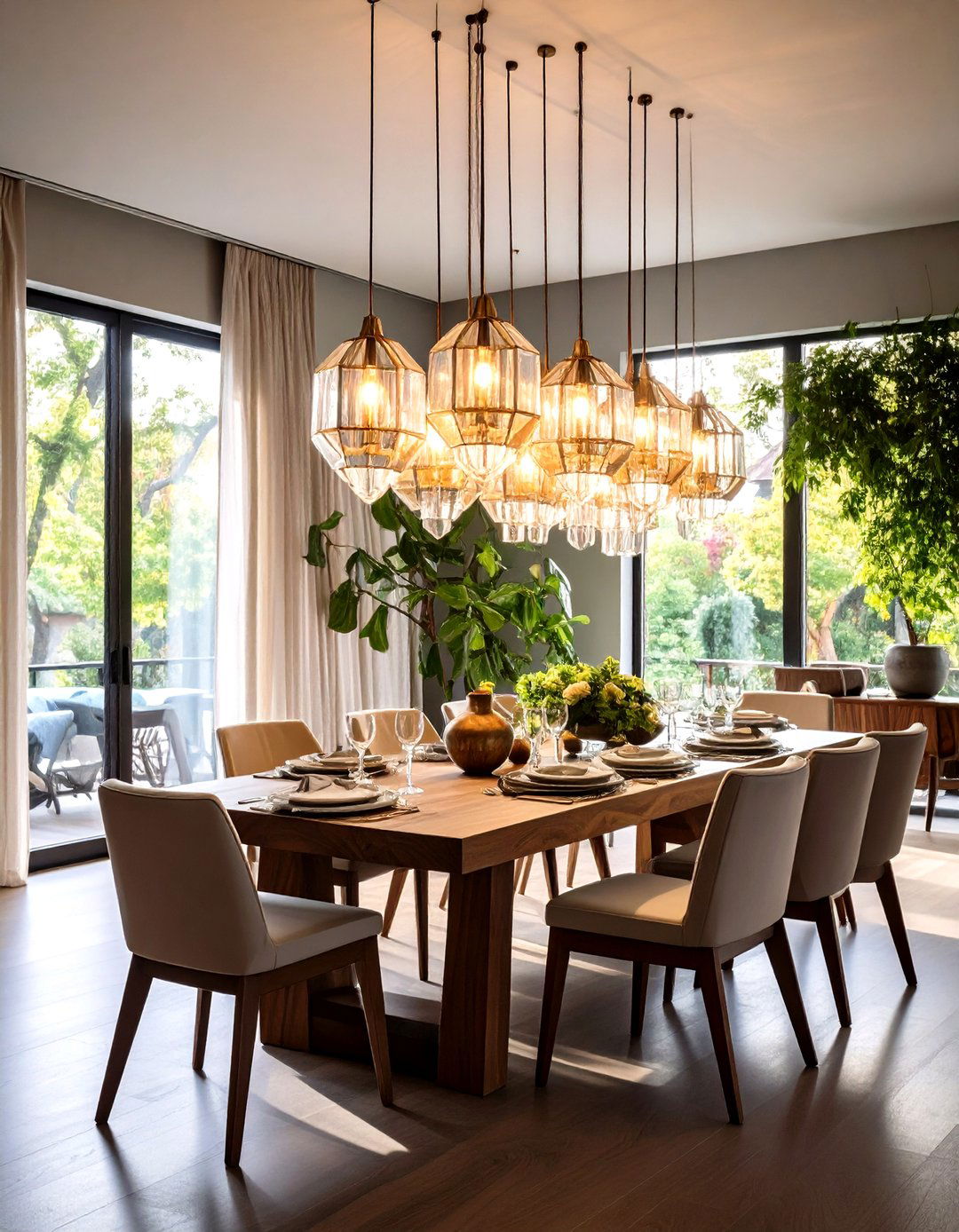
A vaulted ceiling provides the perfect stage for a dramatic chandelier or oversized pendant lights. Hanging a bold fixture from the highest point accentuates the room’s verticality while serving as a central design focal point. Opt for multi-tiered chandeliers in metal or glass to reflect light across angles, or choose a modern geometric pendant for a contemporary touch. Ensure the fixture’s scale matches the room—too small and it will be lost in the expanse; too large and it may overwhelm. Layer with wall sconces or floor lamps to balance illumination, especially in seating or dining areas.
4. Tongue-and-Groove Wood Paneling
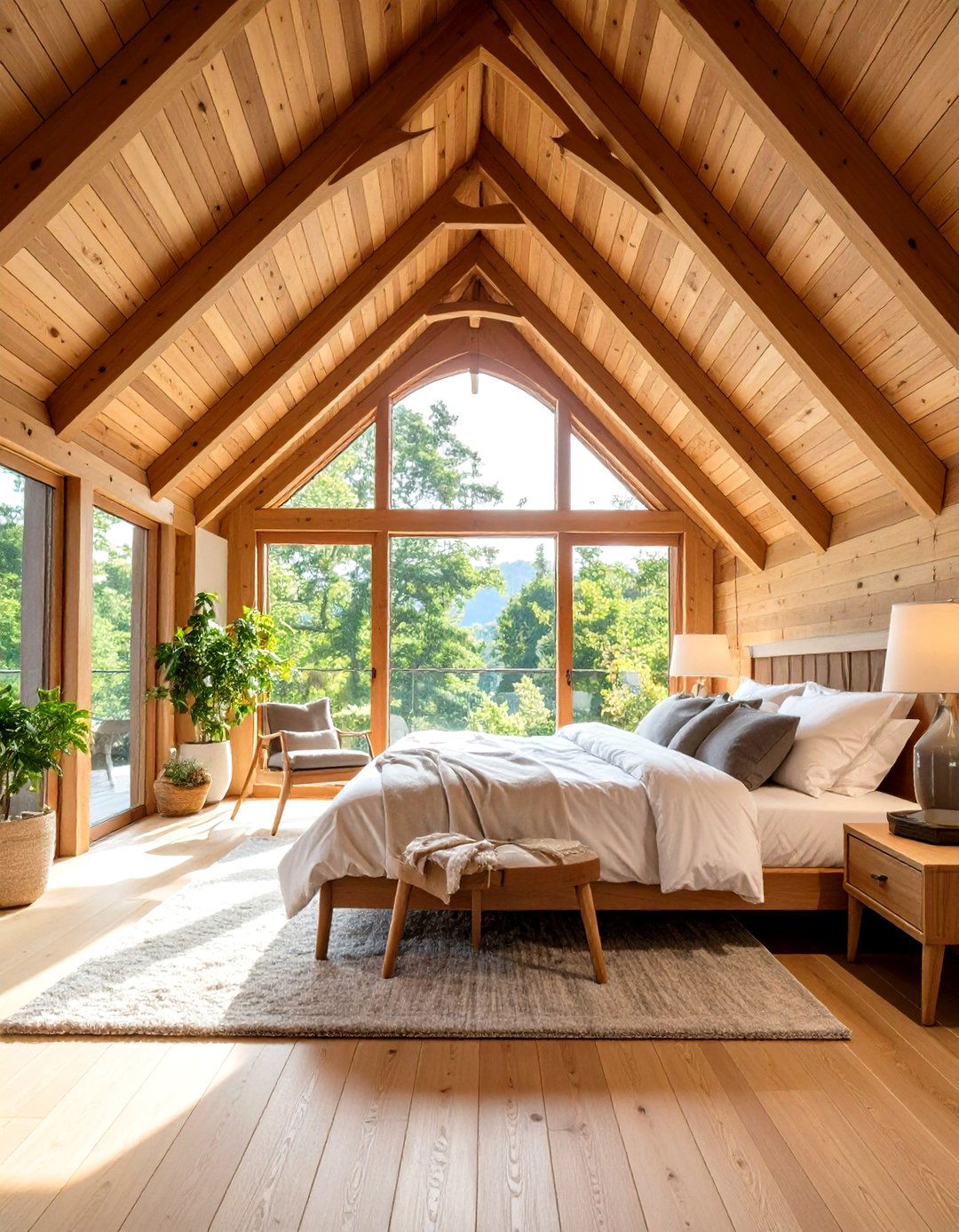
Tongue-and-groove ceiling planks are a timeless way to highlight the angles of a vaulted ceiling. Running planks lengthwise along the slope draws the eye upward, emphasizing the architectural form. Natural wood tones add texture and depth, while painted planks can integrate seamlessly with the room’s color palette. In white or light gray, tongue-and-groove paneling brightens the space without sacrificing character. This method also provides acoustic benefits, softening echoes in high-ceilinged rooms. Proper installation involves moisture-resistant materials in humid areas, ensuring long-lasting performance.
5. Contrasting Dark Ceiling Paint for Drama

For a bold statement, paint the vaulted ceiling in a rich, dark hue—navy, charcoal, or even black—to introduce drama and intimacy. Dark ceilings draw attention to the ceiling’s geometry while visually lowering the perceived height, creating a cozy atmosphere in expansive rooms. Balance the intensity by keeping walls and trim light, or incorporate metallic accents to break up the darkness. This approach suits open-concept living spaces and home theaters, where a moody vibe enhances ambiance. Be mindful of lighting; ample natural or layered artificial light prevents the space from feeling too shadowed.
6. Skylights to Flood Natural Light
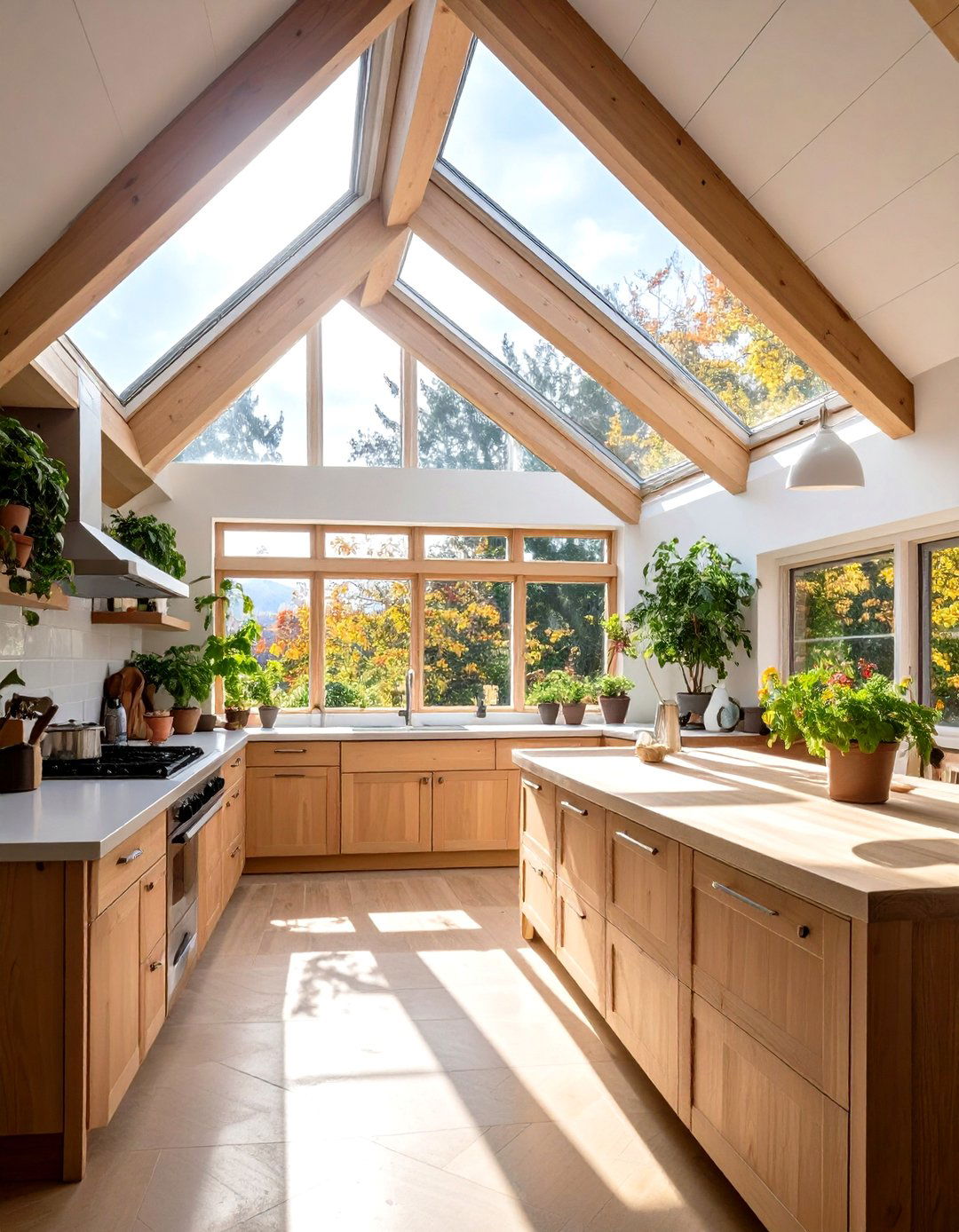
Installing skylights in a vaulted ceiling is a transformative way to bring the sky indoors. Strategically placed skylights increase daylight penetration, reducing the need for daytime electric lighting and connecting inhabitants with changing weather and sun paths. In kitchens and bathrooms, skylights combat moisture issues by selecting tempered, ventilating models. For energy efficiency, choose double-glazed skylights with low-E coatings. When positioned over seating areas, they create dynamic light patterns that shift throughout the day, adding visual interest. Larger skylight banks can even showcase stars at night, turning the ceiling into a living canvas.
7. Mixed Material Beams for Modern Flair

Combine wood and steel beams to achieve an industrial-modern twist on the classic vaulted ceiling. Exposed steel I-beams paired with warm wood planks merge urban and natural elements, perfect for loft conversions or contemporary homes. The juxtaposition highlights structural integrity while providing a distinctive aesthetic edge. Steel beams can be powder-coated in matte black or left raw for a rugged look; wood inserts soften the industrial vibe. This approach also allows for longer spans without intermediate supports, maintaining an open floor plan beneath the vaulted ceiling’s peak.
8. Shiplap Texture for a Coastal Vibe

Shiplap planks installed on a vaulted ceiling evoke breezy, seaside cottages, lending rooms a relaxed coastal feel. Painting the shiplap in crisp white or soft pastel hues amplifies light, while the slight gaps between boards add subtle shadow lines for depth. This texture complements nautical décor—think navy accents, light woods, and natural fibers. To accentuate the effect, incorporate rope or rope-wrapped pendant lights. Shiplap ceilings work especially well in beach houses and sunrooms, reinforcing indoor-outdoor connections and casual elegance.
9. Accent Wood Planks for Warmth
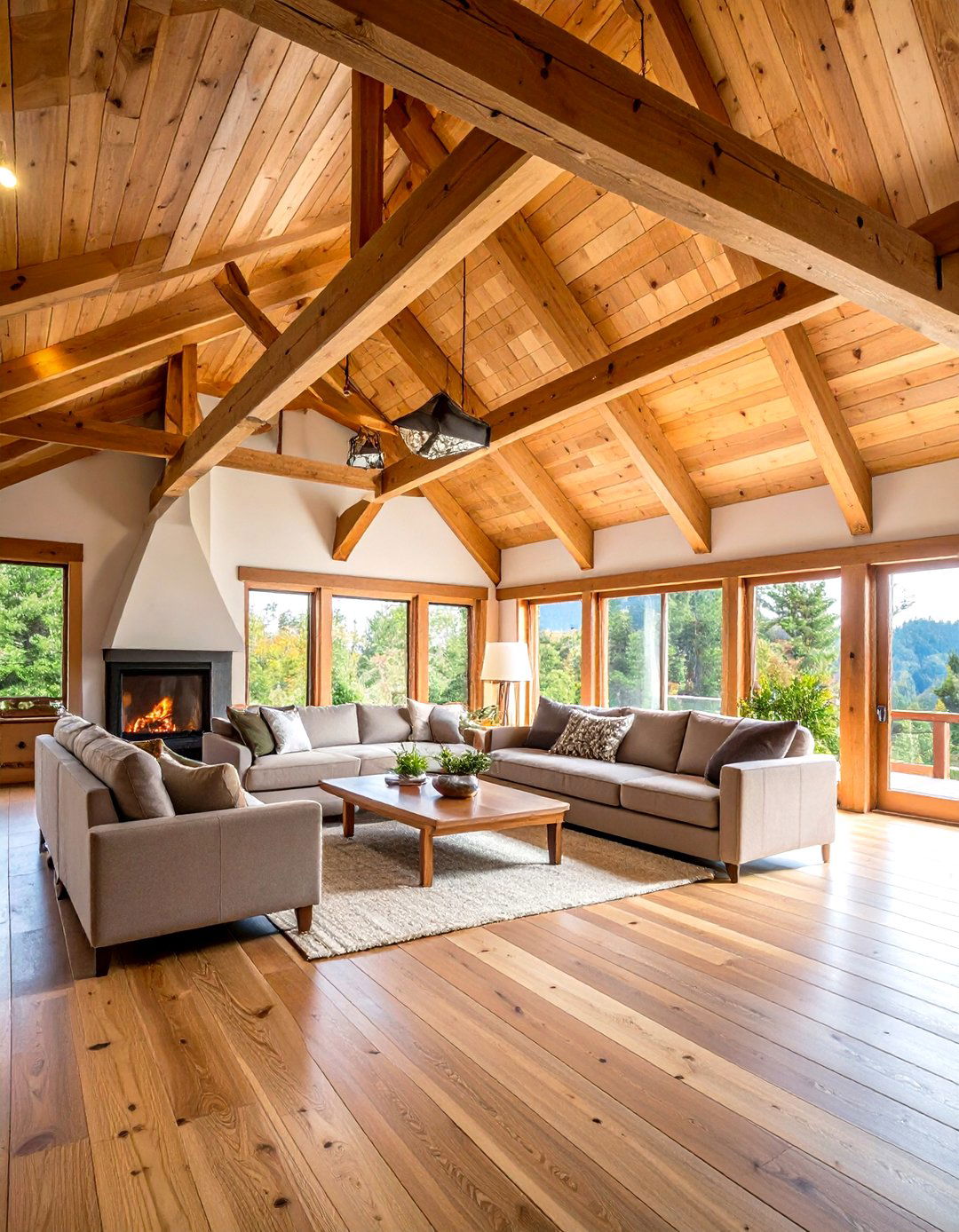
Rather than covering the entire ceiling, install accent wood planks along the highest ridge or only on one slope of the vault. This partial wood treatment draws attention to the ceiling’s apex and creates a focal zone. Opt for reclaimed barn wood for character-filled texture or engineered wood for consistency. Pair with complementary wood tones in flooring or furniture to tie the design together. Accent planks reduce installation costs compared to full coverage while still delivering that inviting, natural warmth.
10. Painted Beam Highlights
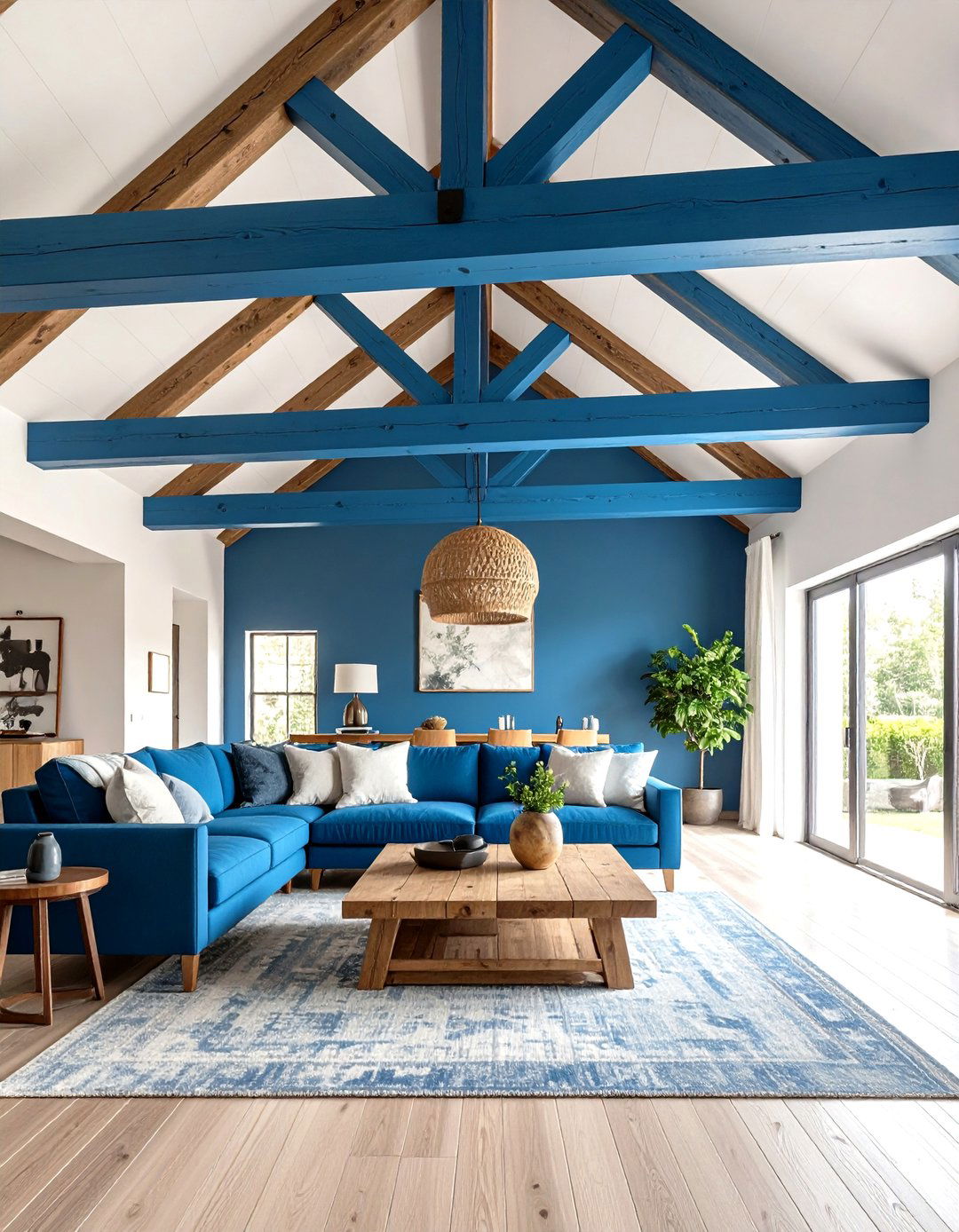
Giving exposed beams a contrasting paint treatment can elevate their visual impact. Paint the beams in a bold color—deep blue, forest green, or matte black—while keeping the surrounding ceiling lighter. This color-blocking technique outlines the ceiling’s structure and adds a modern graphic touch. It works beautifully in minimalist interiors where architectural lines are central to the aesthetic. Be sure to use high-quality, durable paint suited for wood surfaces to maintain crisp edges and prevent chipping over time.
11. Integrated Recessed Lighting
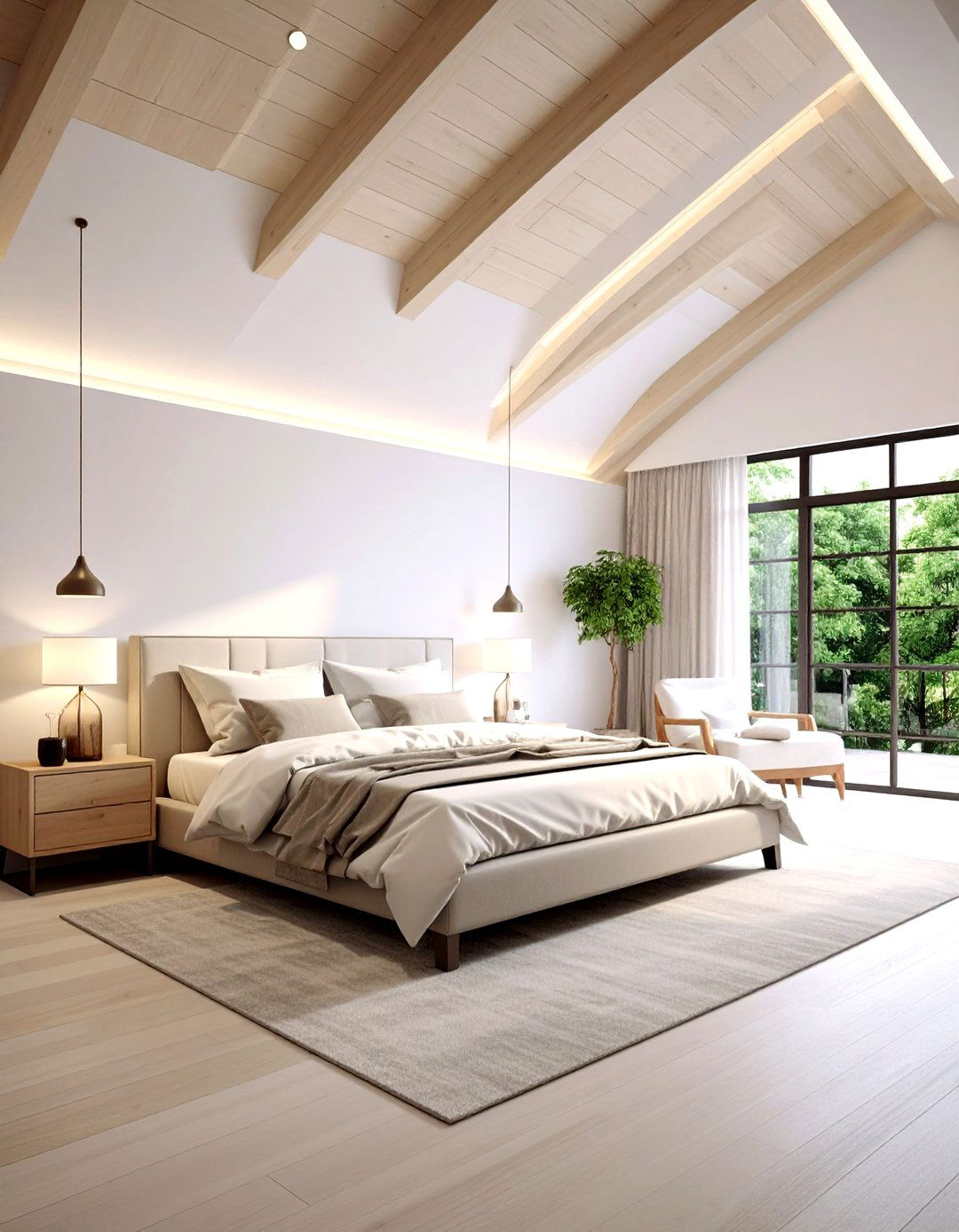
Recessed downlights installed along the slopes of a vaulted ceiling provide unobtrusive illumination that accentuates the ceiling’s contours. By spacing lights at regular intervals, you create even wash lighting that reduces shadows and highlights architectural details. Dimmable LED fixtures allow for customizable ambiance—bright light for tasks or soft glow for relaxation. Concealed wiring within ceiling cavities keeps the design clean. This solution is ideal for modern interiors where minimalism and functionality converge.
12. Vaulted Ceiling in Kitchen with Open Shelving

In kitchen spaces, a vaulted ceiling can showcase open shelving along the upper walls, creating additional storage and display areas. Use floating wood shelves beneath the vault, paired with pendant lights hung at varying heights to fill the vertical expanse. This opens the kitchen visually while offering practical access to cookware, dishware, or decorative items. The combination of open shelving and a vaulted ceiling fosters an airy, inviting cooking environment.
13. Vaulted Ceiling in Bathroom with Moisture-Resistant Materials
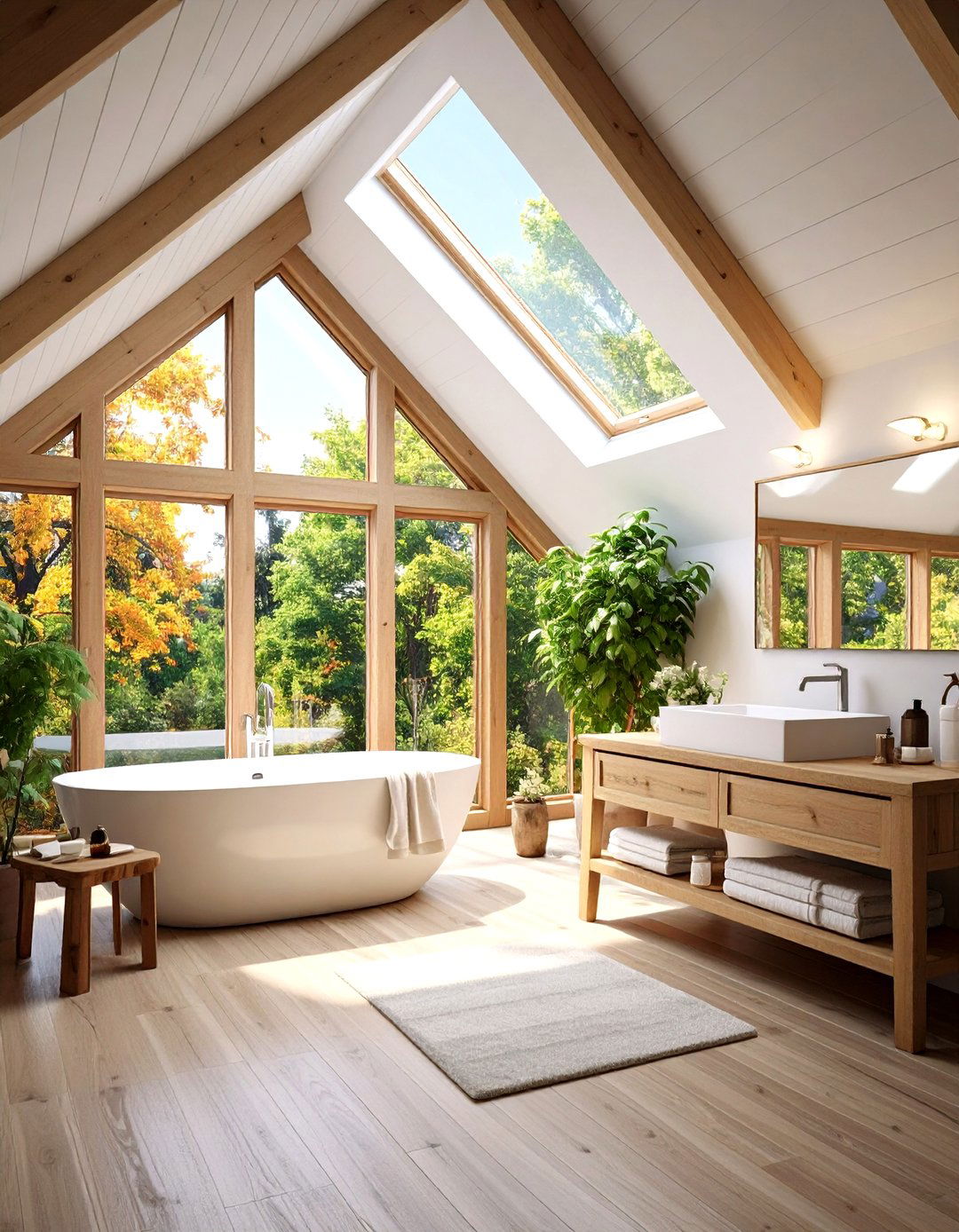
Bring vaulted ceilings into bathrooms by using moisture-resistant ceiling planks or PVC beadboard that stand up to humidity. A higher ceiling reduces condensation buildup and improves ventilation. Add a center skylight or clerestory window to boost natural light—ideal for morning routines. Combine with soft, indirect lighting in alcoves for evening relaxation. Properly sealed and ventilated, vaulted bathrooms feel like spa retreats, offering both functional and aesthetic benefits.
14. Beamed Outdoor Patio Vaulted Ceiling
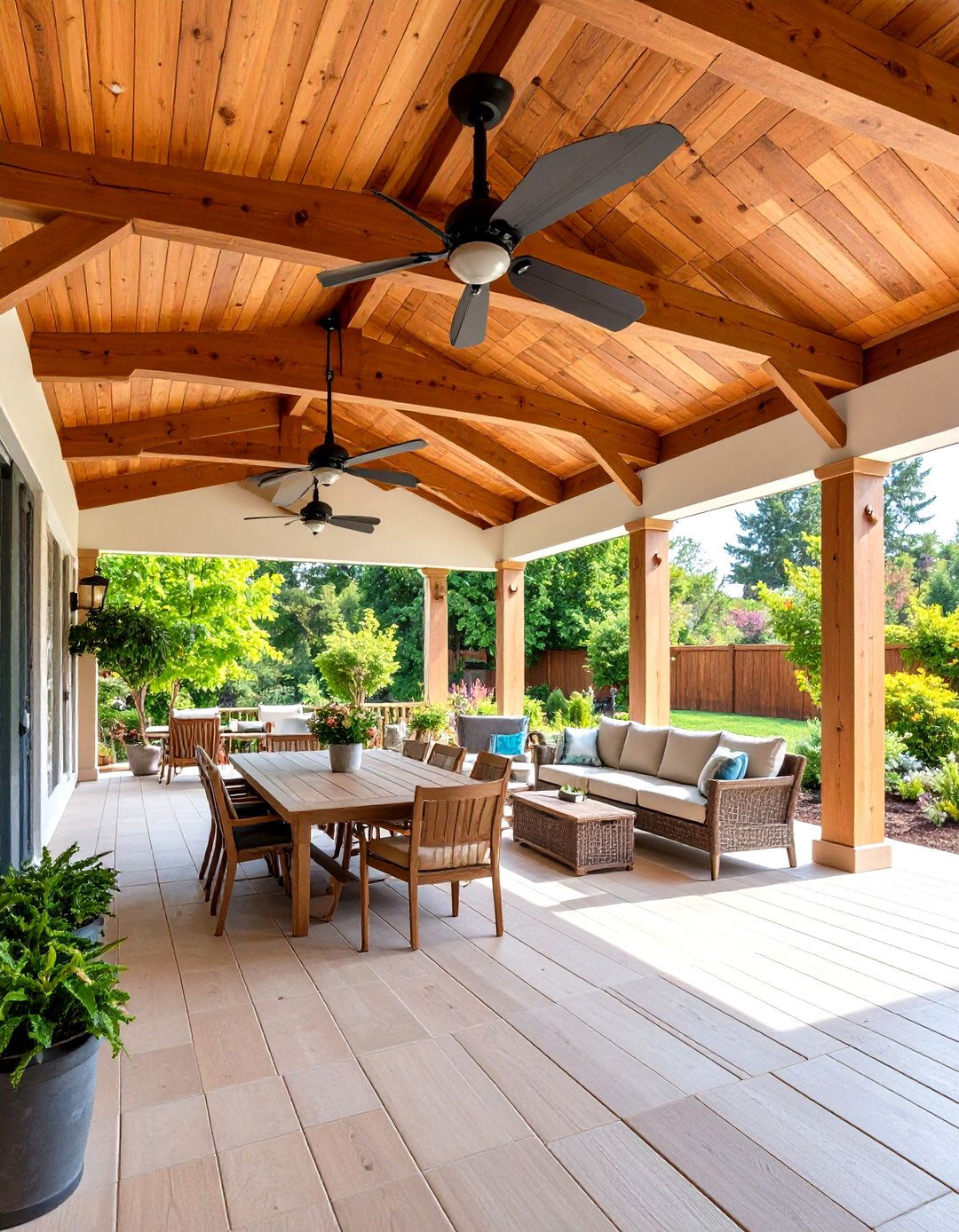
Extend living space outdoors by adding a vaulted ceiling to your patio or porch, complete with exposed beams and tongue-and-groove planks. A vaulted outdoor ceiling provides shelter while still maintaining an open-air feel. Incorporate ceiling fans or string lights suspended from the peak to enhance comfort and ambiance. The wood elements create an inviting transition between indoors and outdoors, perfect for entertaining or relaxation year-round.
15. Vaulted Ceiling with Hidden Cove Lighting
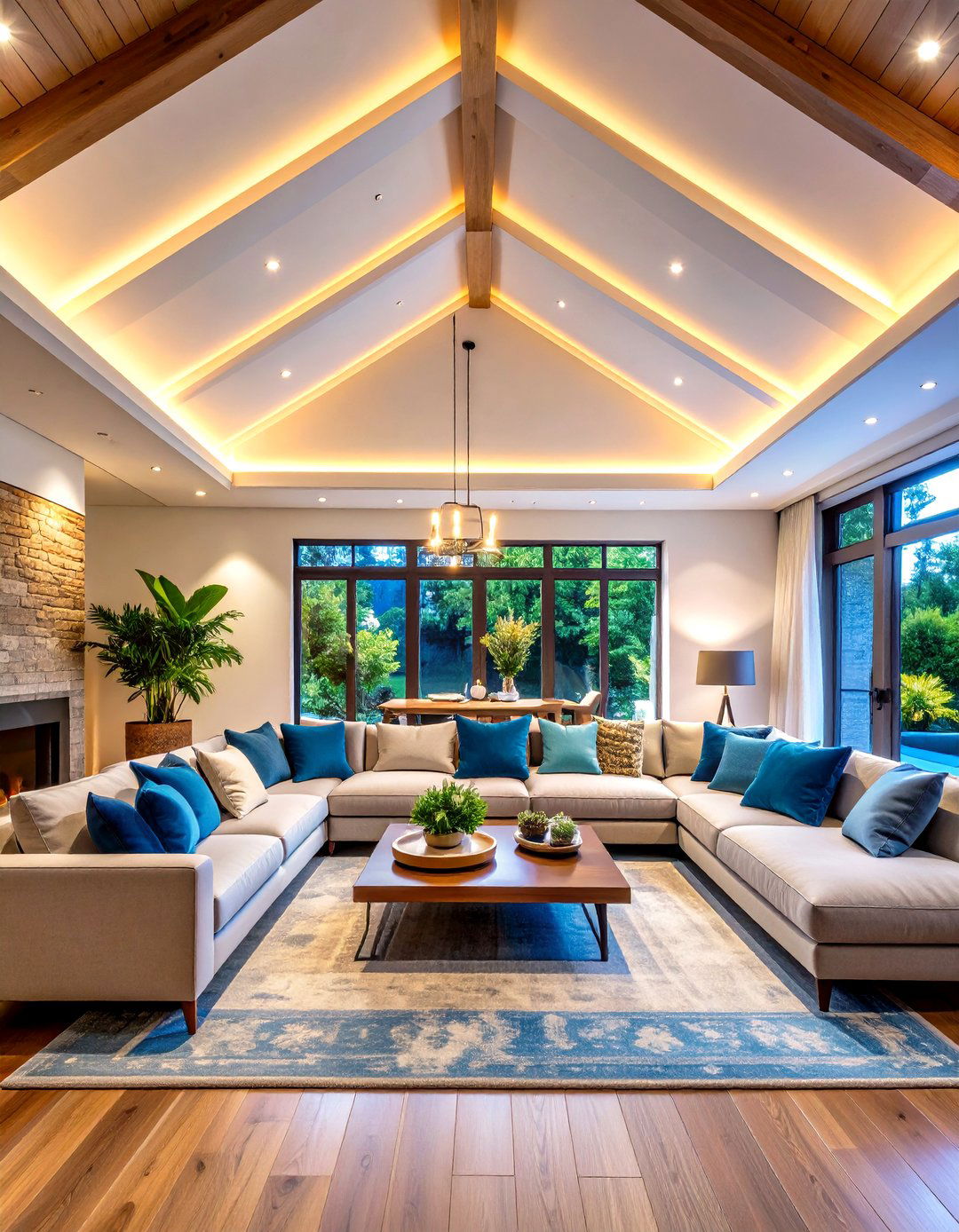
Install LED strip lights in a recessed cove along the intersection of the vaulted ceiling and the walls. This hidden lighting creates a soft uplight that accentuates the ceiling’s geometry without visible fixtures. Choose warm white LEDs for cozy living areas or cool white for modern kitchens and bathrooms. The indirect glow adds drama and depth, making the ceiling appear to float above the space. Cove lighting is energy-efficient and can be dimmed for versatile mood settings.
16. Metal Accents for an Industrial Look
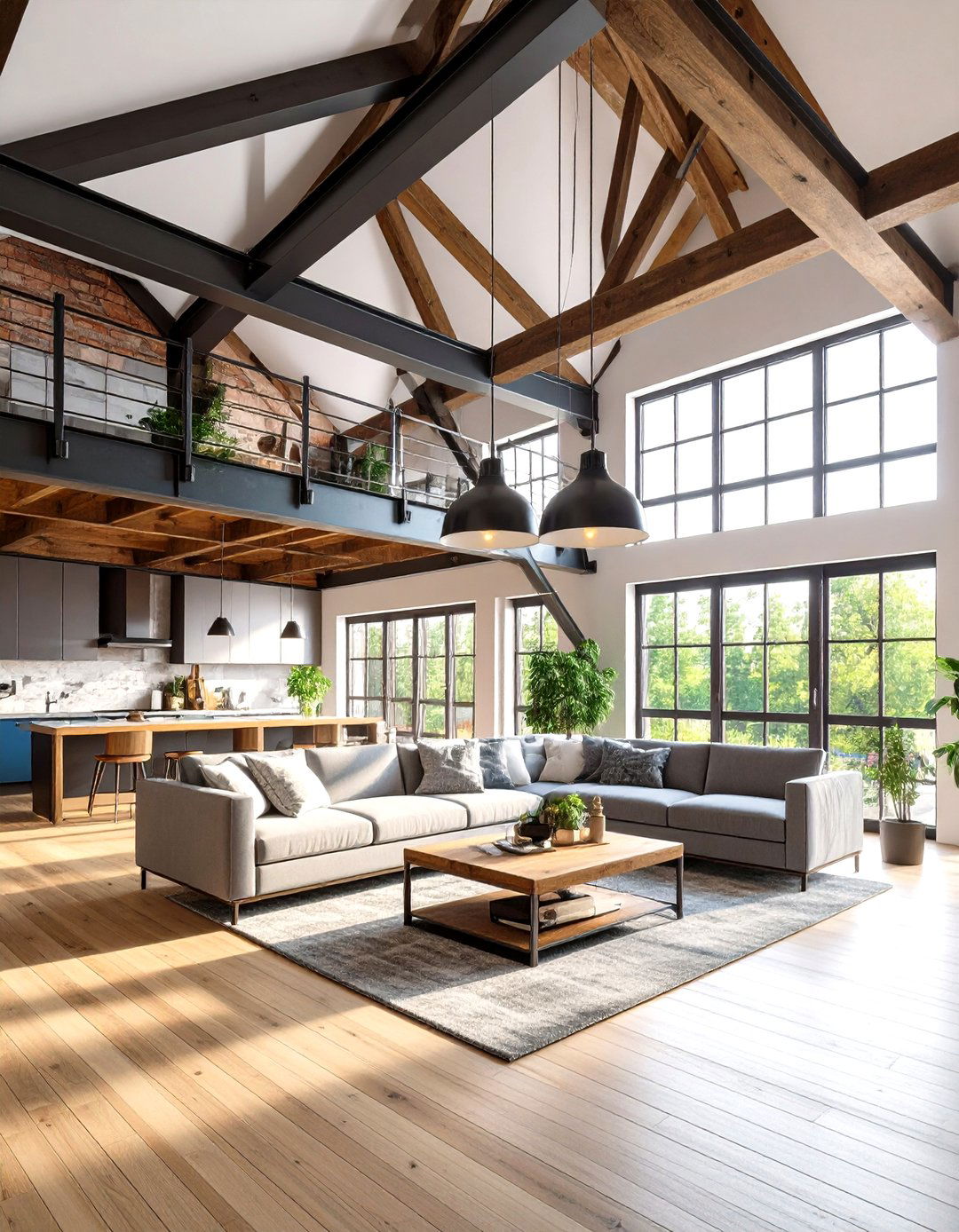
Pairing a vaulted ceiling with metal accents—such as exposed ductwork, metal trusses, or steel beam brackets—reinforces an industrial aesthetic. Raw or matte-finished metals contrast sharply with warm wood or painted ceilings, creating dynamic visual tension. Use metal pendant lights or track lighting to echo the ceiling’s hardware. This approach suits loft-style apartments and modern renovations, where structural honesty and sleek materials drive the design narrative.
17. Painted Ceiling with Bold Colors or Patterns
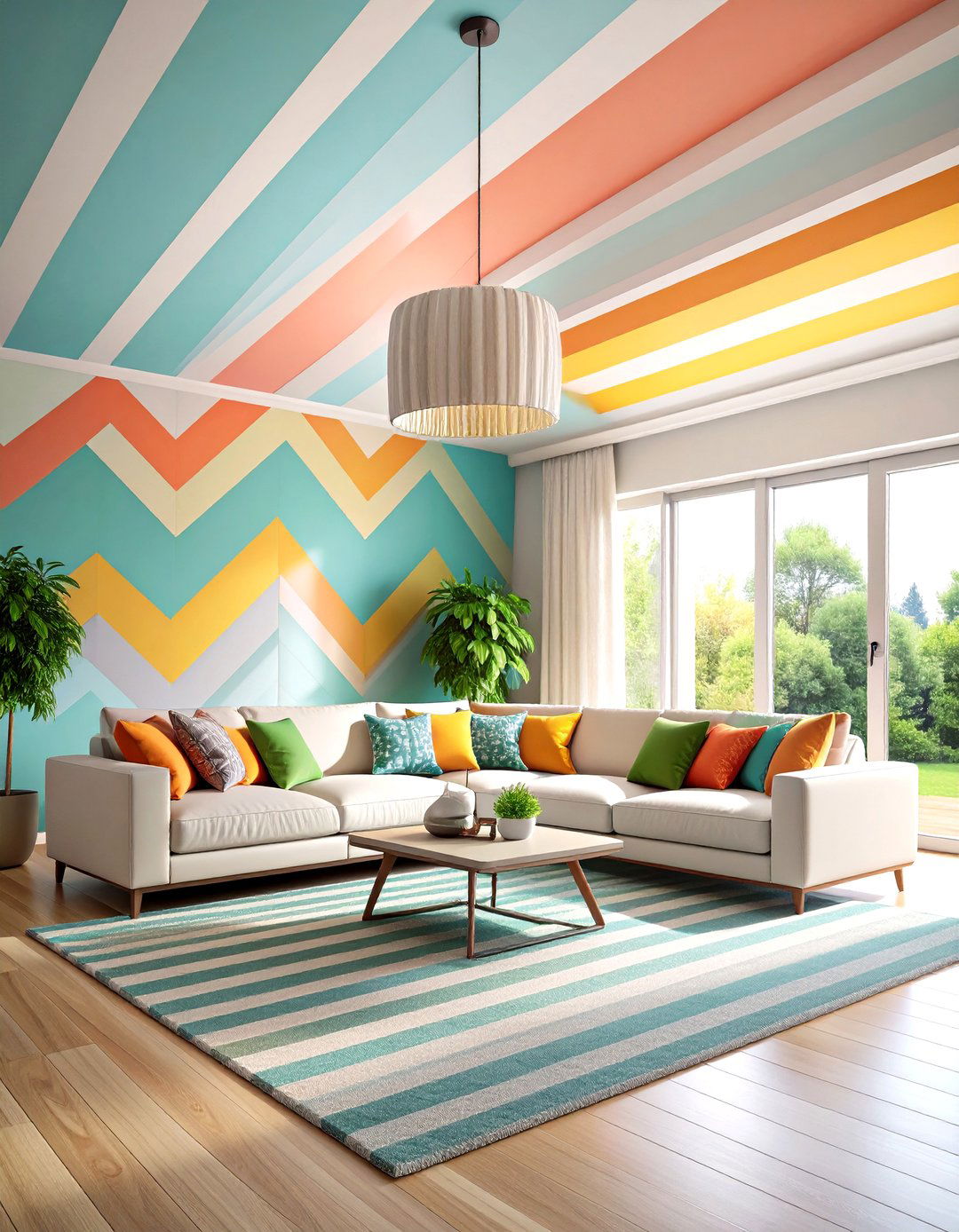
Transform your vaulted ceiling into an artistic statement by applying a bold color or geometric pattern. Use painter’s tape to create chevrons or stripes along the slopes, or incorporate stencils for more intricate motifs. This technique brings personality to the uppermost surfaces and can visually tie together furniture and décor elements below. Dark hues recede for drama, while bright or pastel shades energize the room. Be sure to balance vibrant ceilings with simpler wall treatments to avoid visual overload.
18. Vaulted Ceiling with Skylight and Green Wall

Combine a central skylight with a living green wall beneath it to blur boundaries between indoors and outdoors. The skylight channels sunlight directly onto the vertical garden, promoting plant growth and creating a lush focal point. This pairing suits entryways, sunrooms, or home offices, offering a calming biophilic environment. Ensure proper irrigation and waterproofing behind the green wall to protect the structure. The result is an elevated ceiling that literally and figuratively brings nature inside.
19. Vaulted Ceiling with Transom Windows
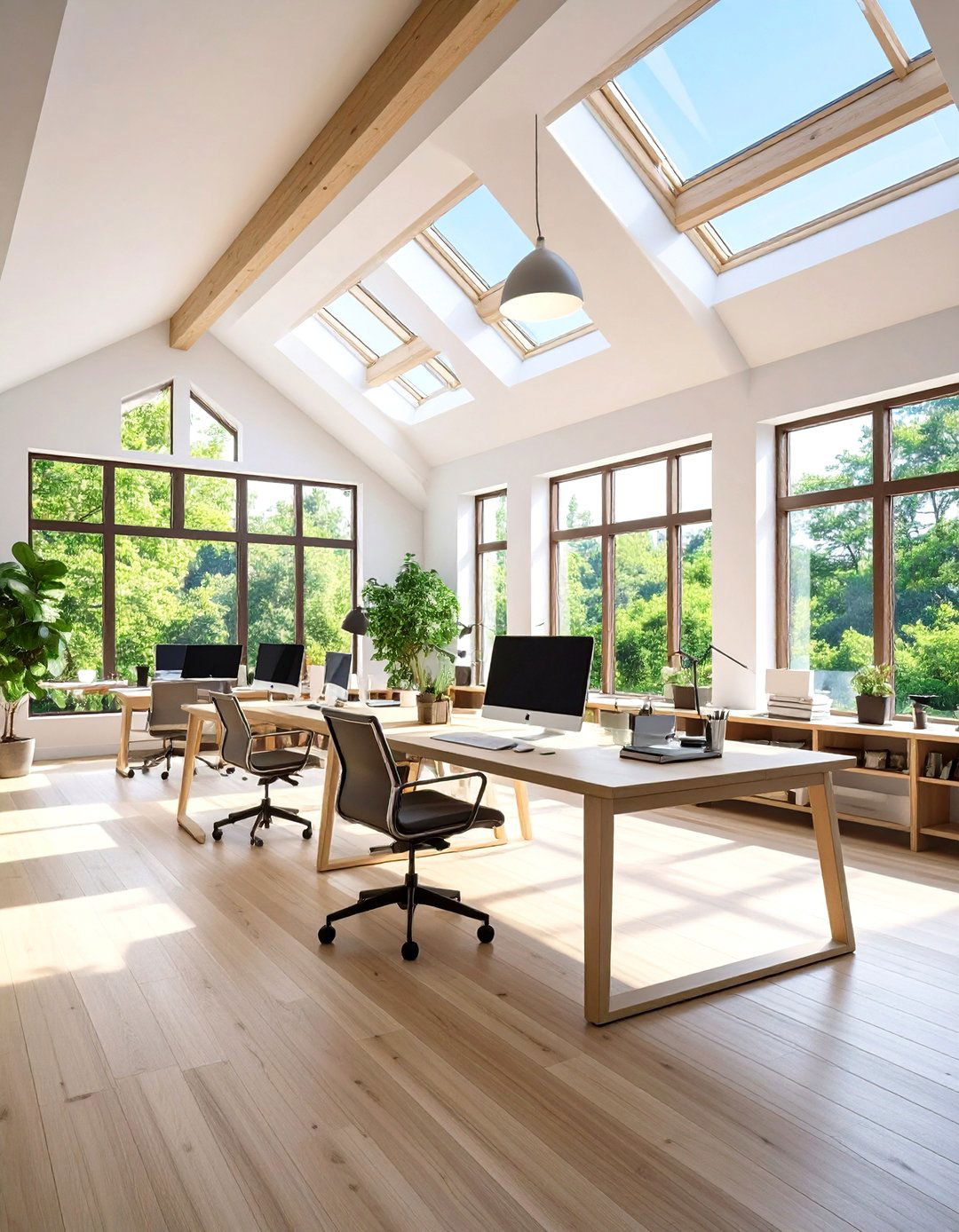
Add rows of transom or clerestory windows at the wall-ceiling junction to maximize daylight and privacy. These high windows let in ambient light without sacrificing wall space for artwork or furniture. Operable transoms also enhance cross-ventilation, improving comfort in warmer climates. The windows accentuate the vault’s apex, creating visual rhythm along the ceiling line. Combine with simple drapery or leave them bare for a sleek, unobstructed look.
20. Vaulted Ceiling with Elongated Fireplace
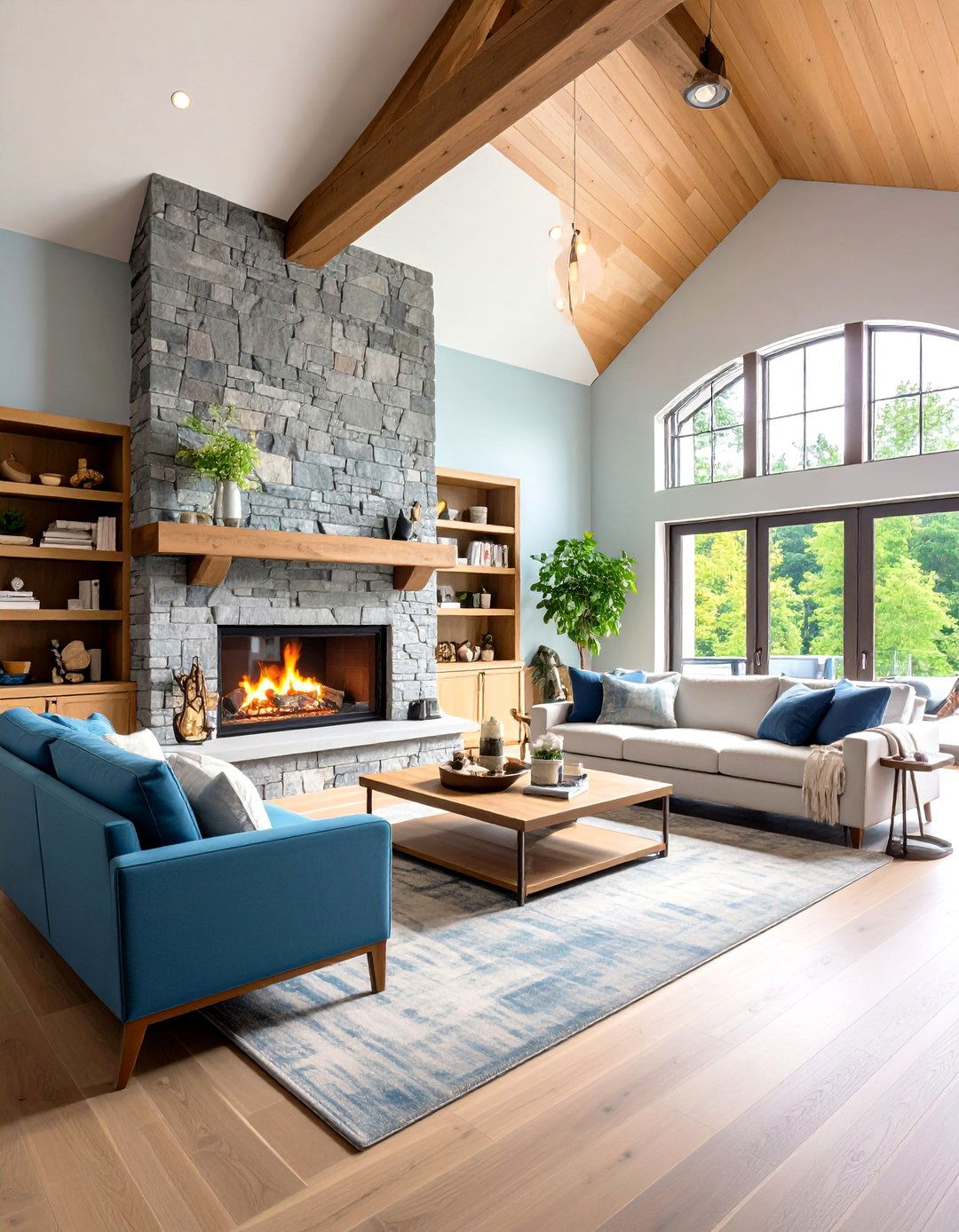
Anchor a vaulted living room by installing a tall, elongated fireplace that follows the room’s vertical axis. A floor-to-ceiling stone or tile fireplace chimney emphasizes the ceiling’s height, drawing the eye upward. Flank with built-in shelving or low seating to balance the vertical emphasis. The fireplace becomes both a functional heat source and an architectural spine that unifies floor and ceiling design. Choose materials that complement ceiling finishes—wood, brick, or polished concrete—to create a cohesive statement.
Conclusion:
Vaulted ceilings offer a versatile canvas to express personal style, enhance spatial perception, and introduce architectural interest across diverse rooms. By selecting treatments—whether through materials like wood planks and metal beams, lighting solutions such as skylights and hidden LED coves, or artful paint and pattern applications—you can tailor the vaulted ceiling’s impact to match any interior aesthetic. Practical implementations in kitchens, bathrooms, and outdoor living areas demonstrate that functionality need not be sacrificed for form. Ultimately, thoughtful design choices will ensure that your vaulted ceilings not only elevate the visual appeal of your home but also enrich the daily living experience through light, texture, and a sense of openness.


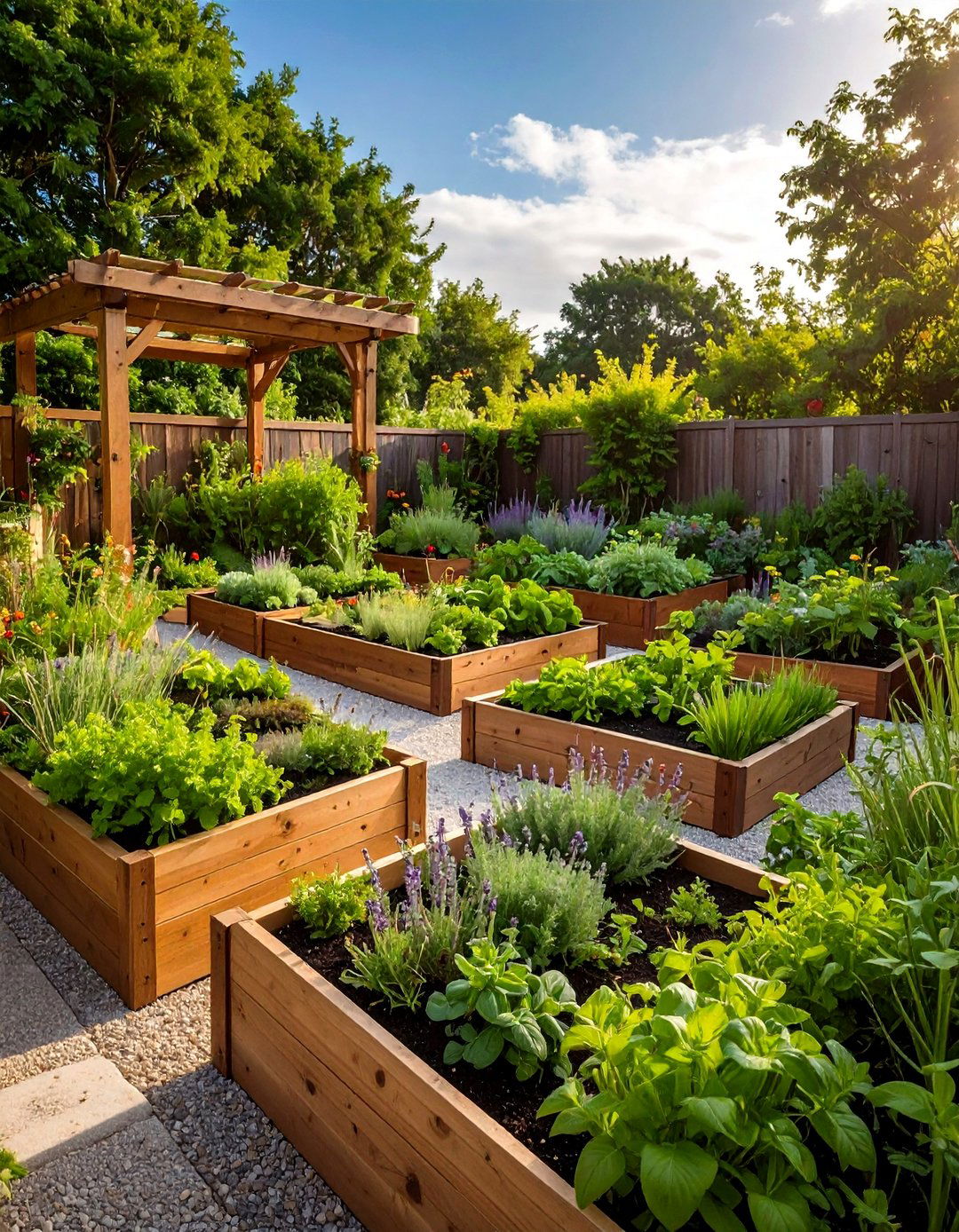
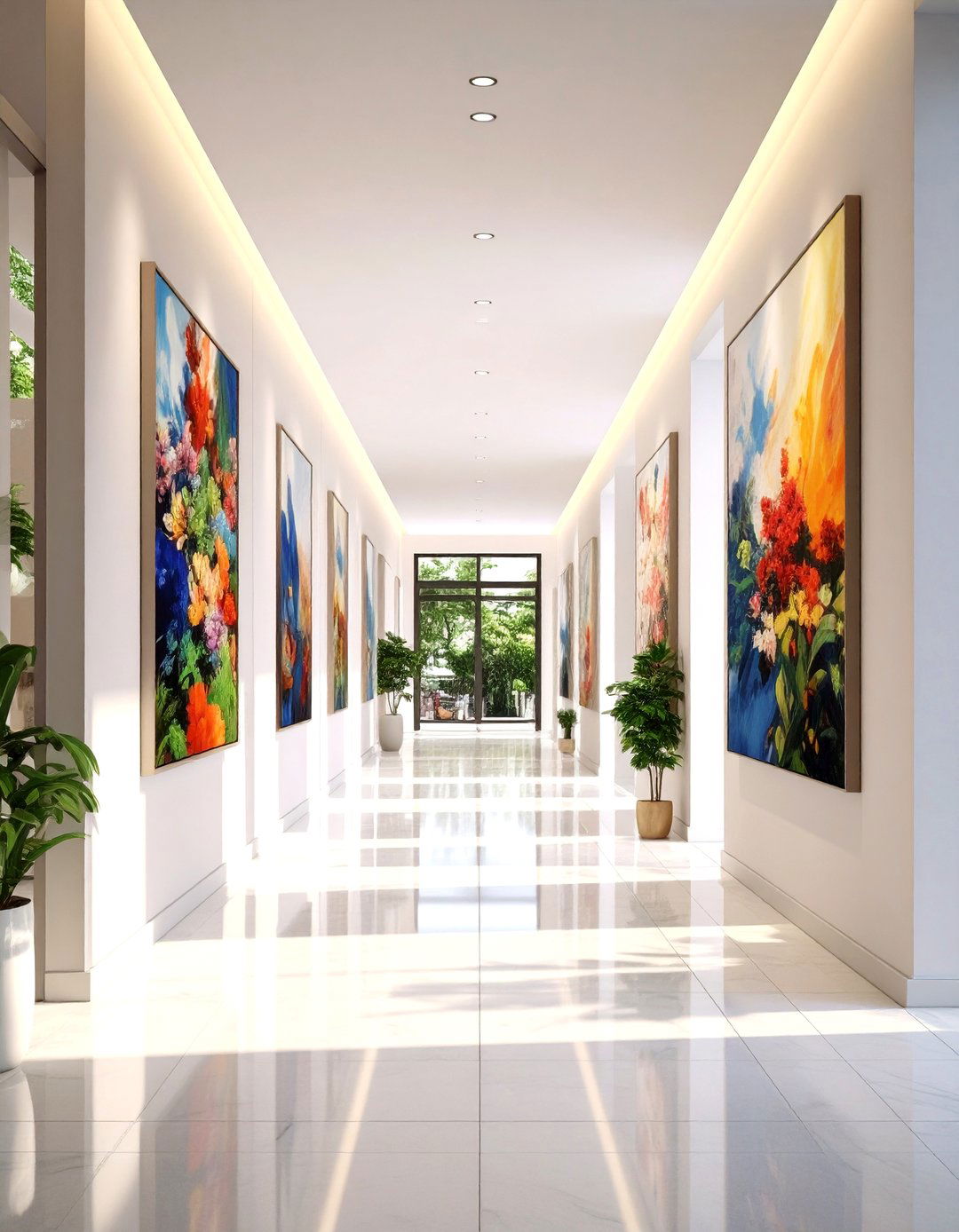
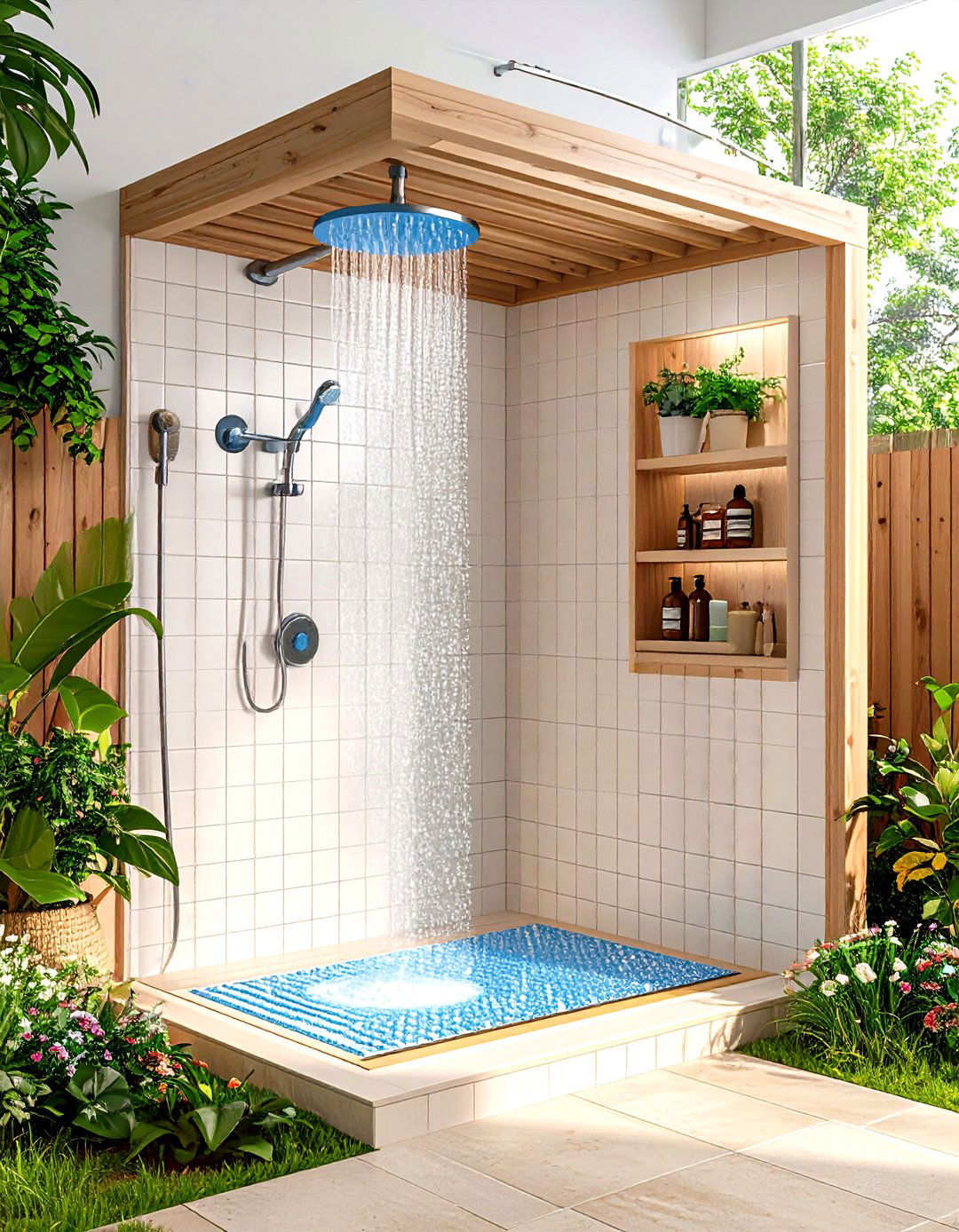
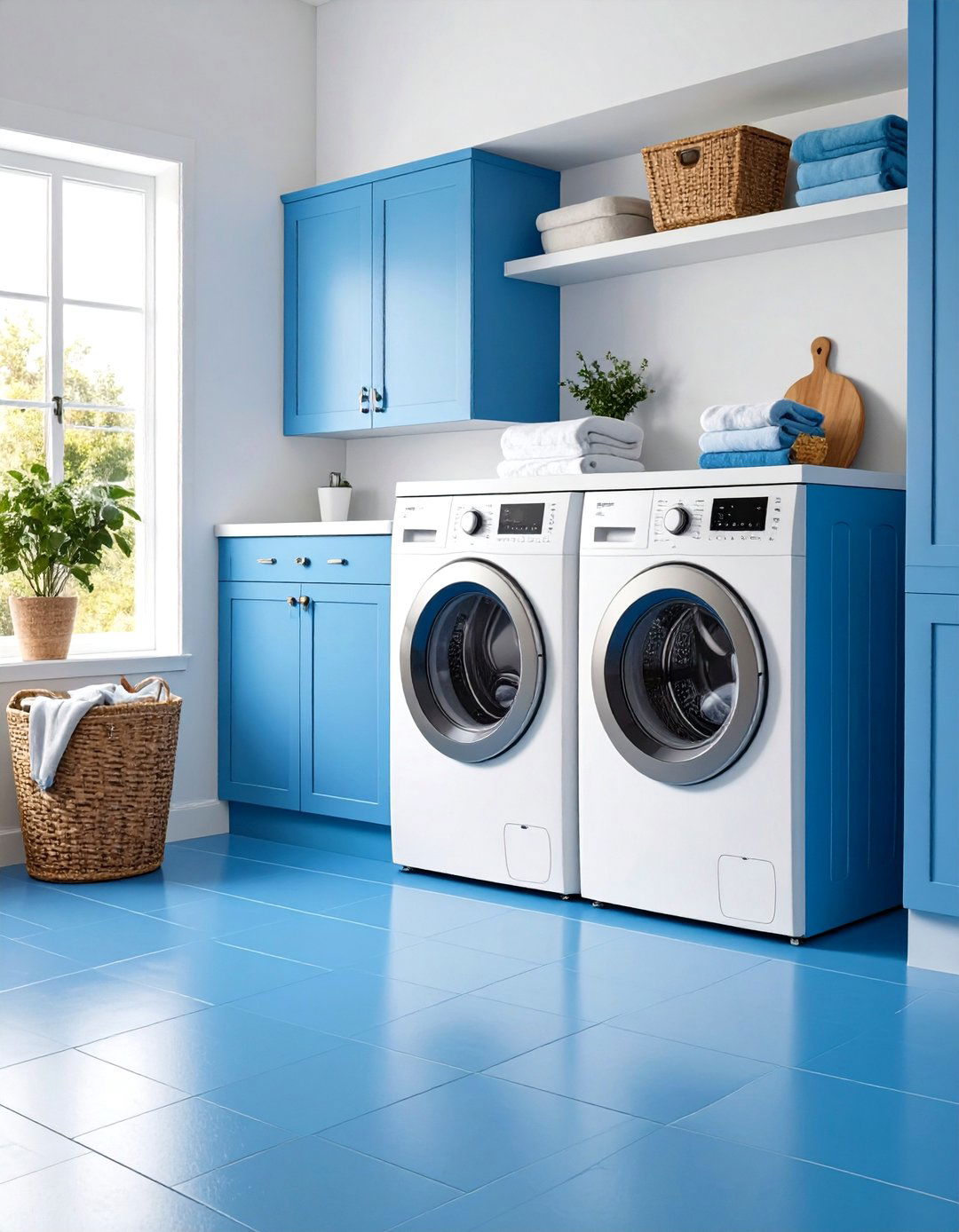
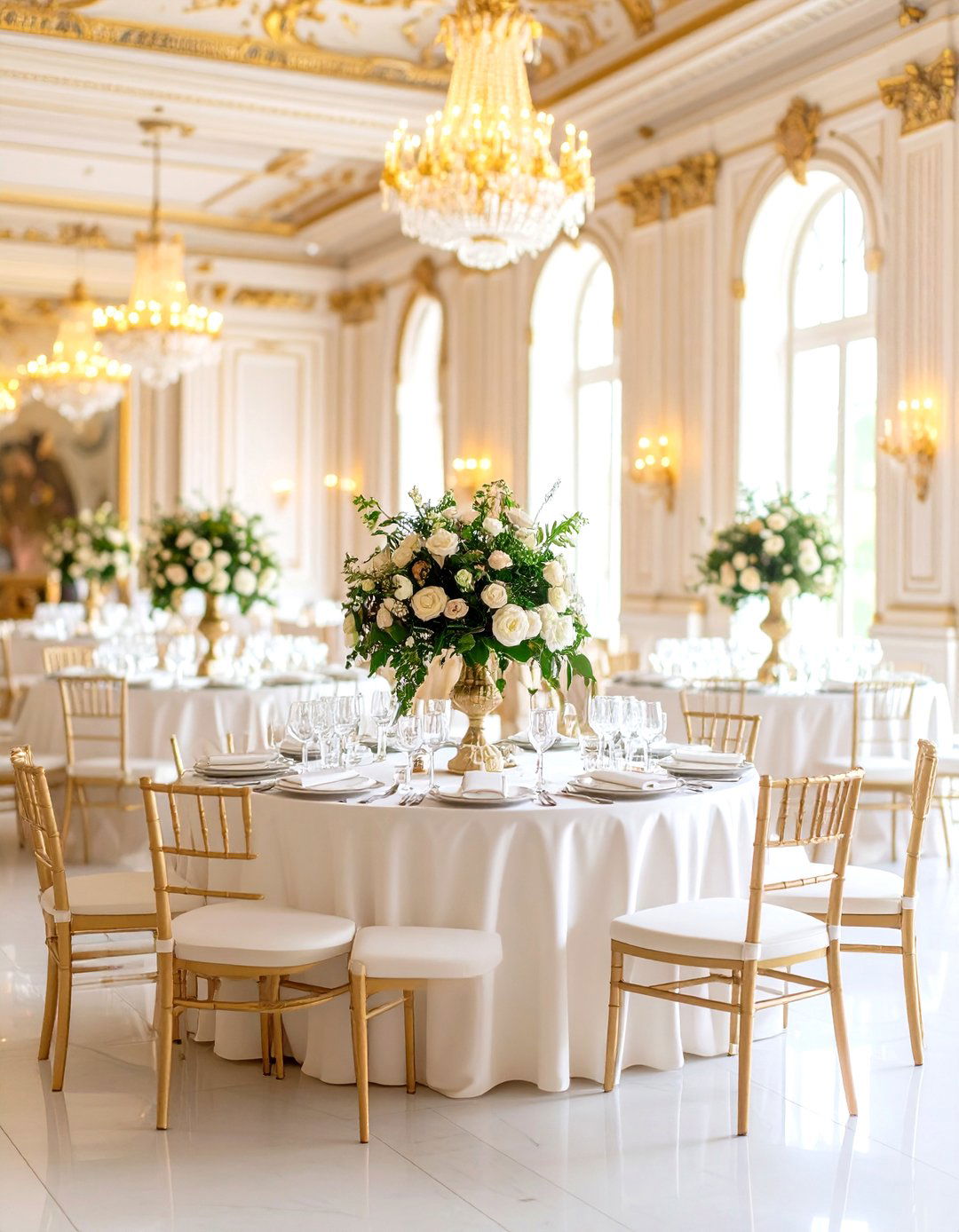
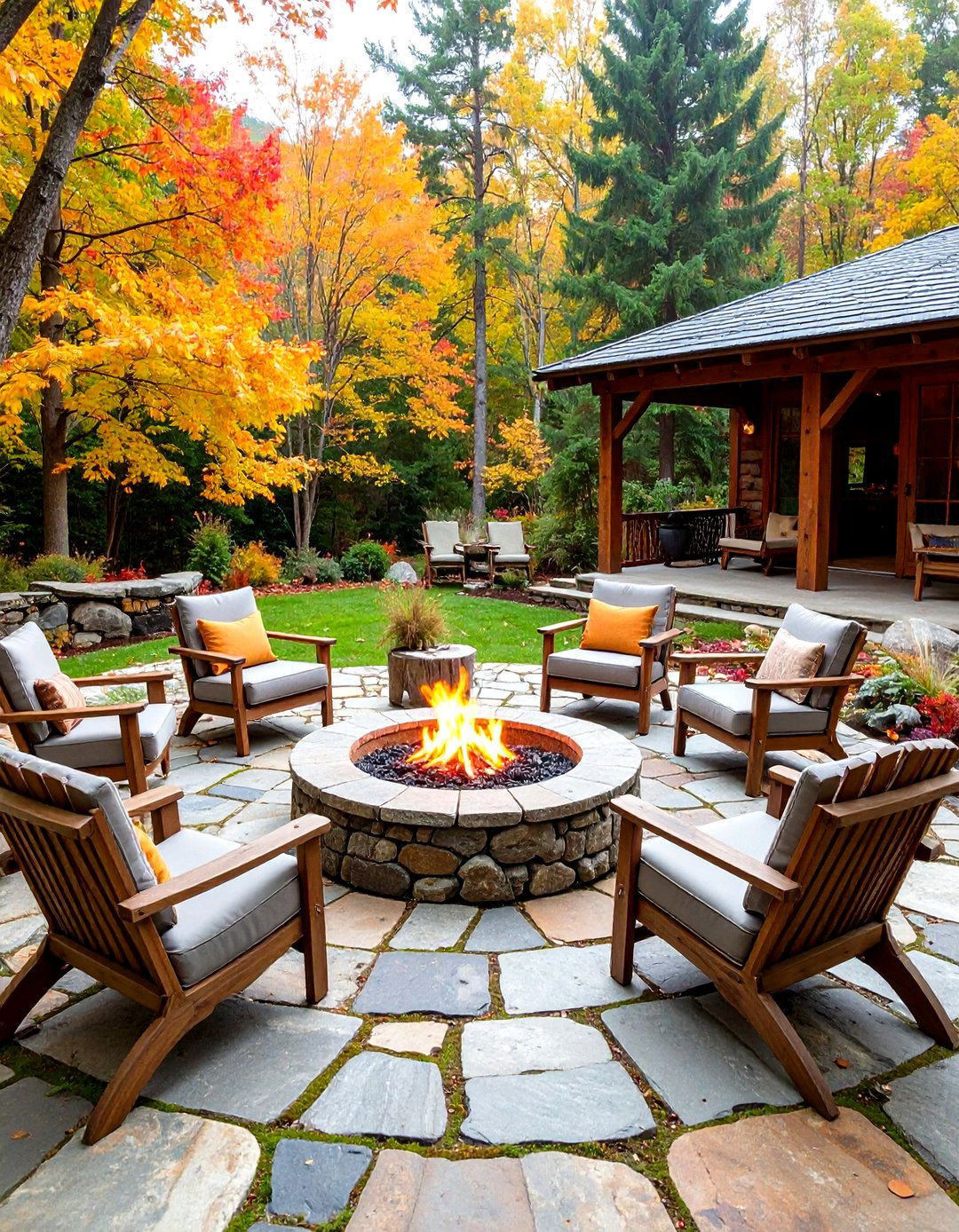
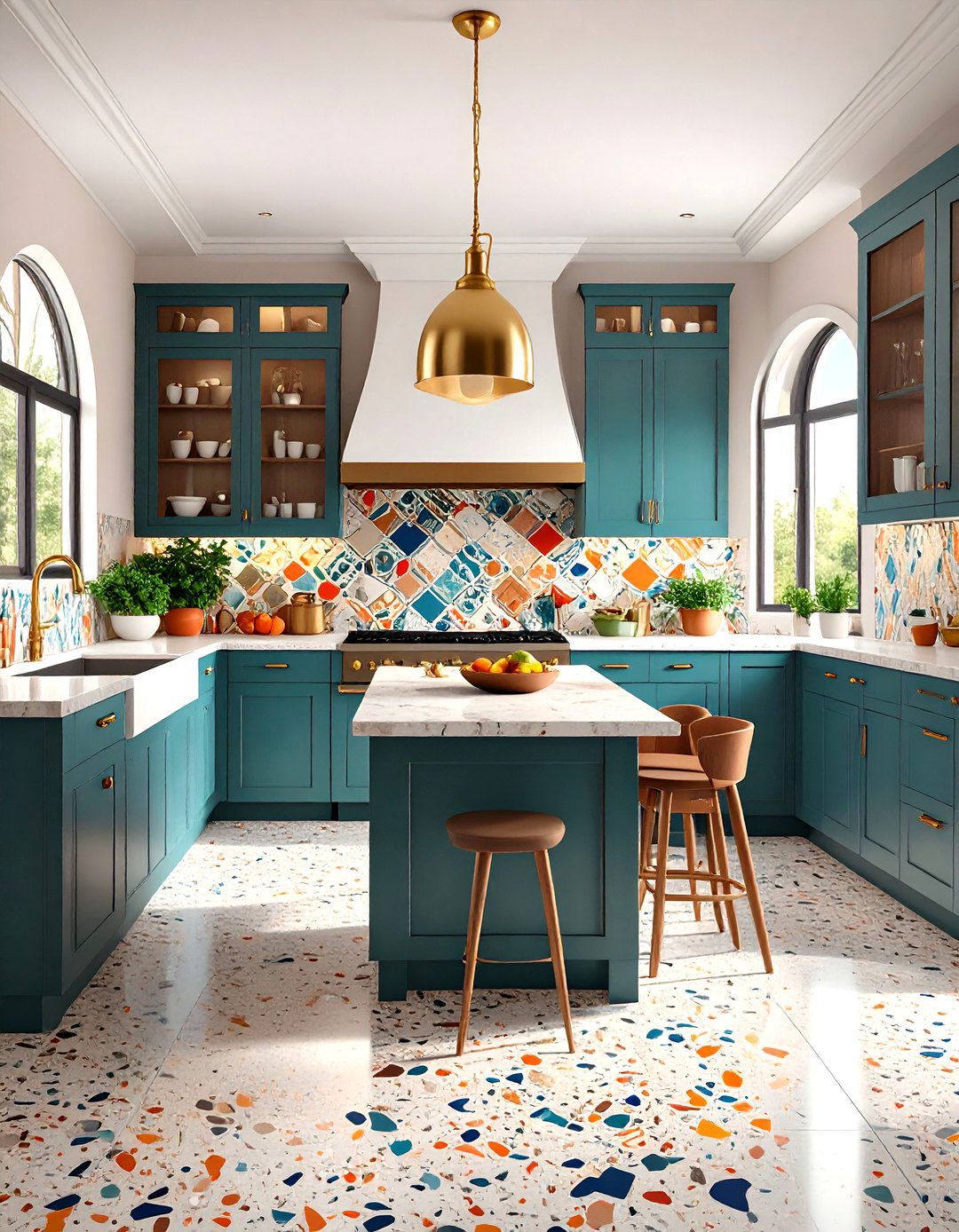

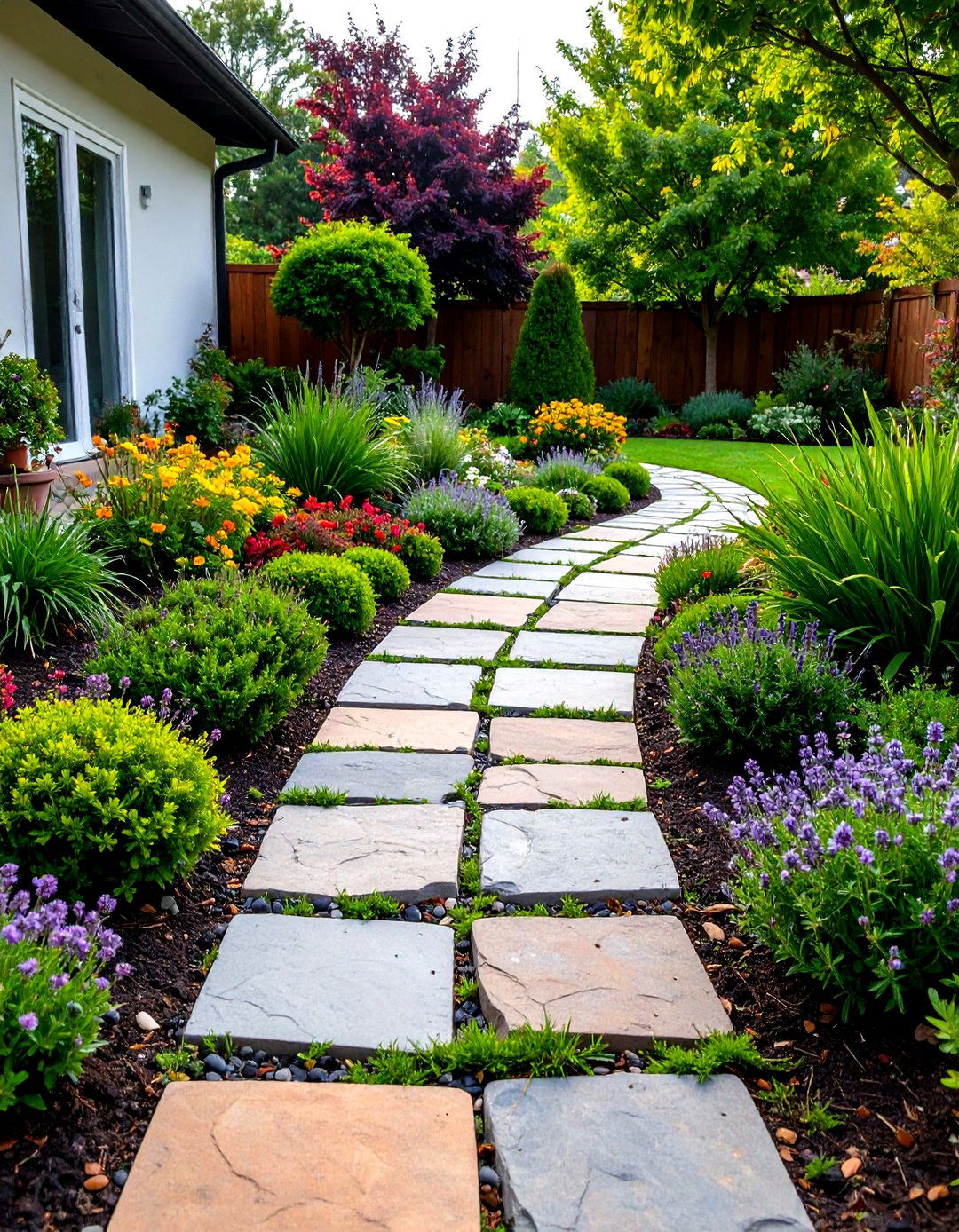
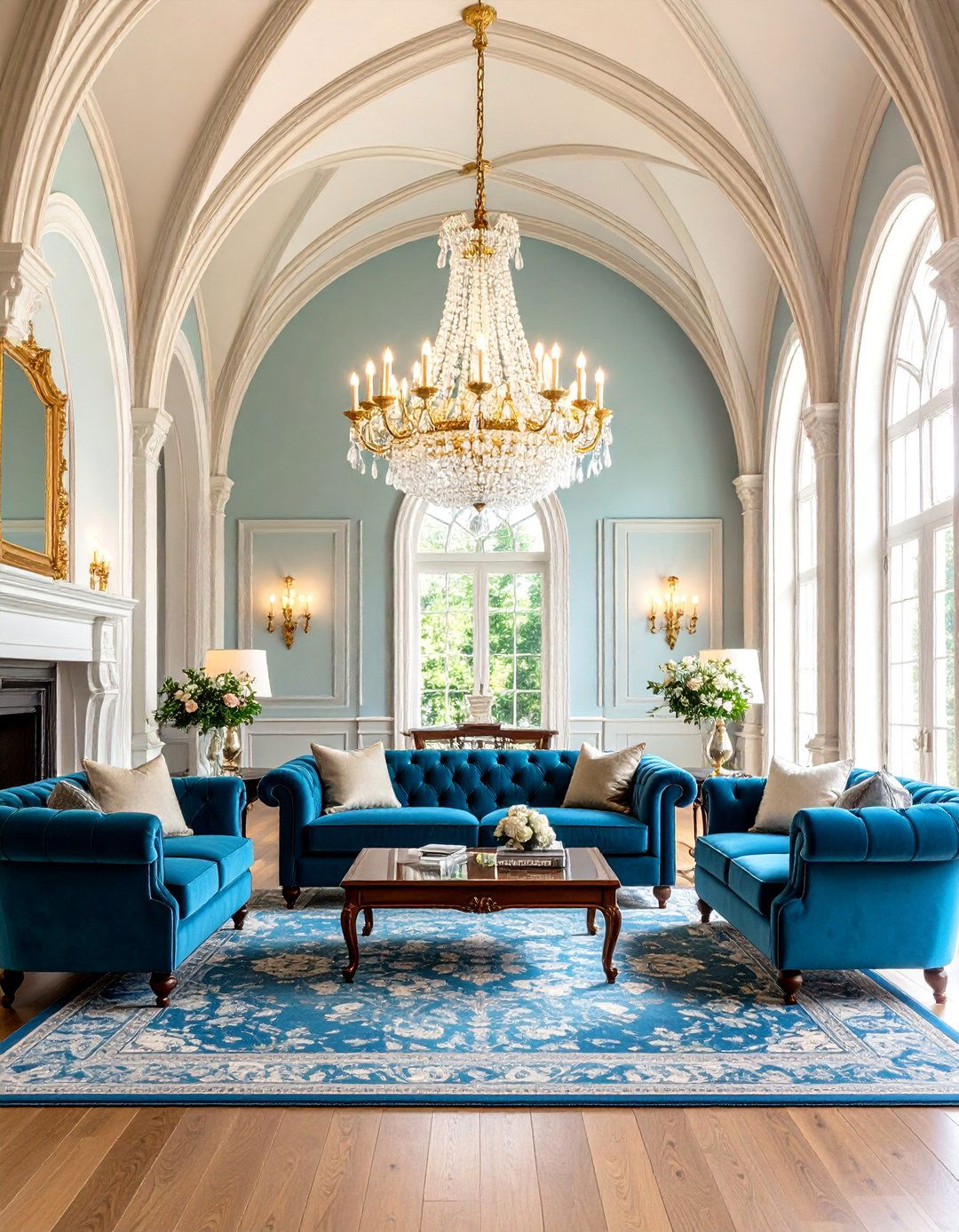

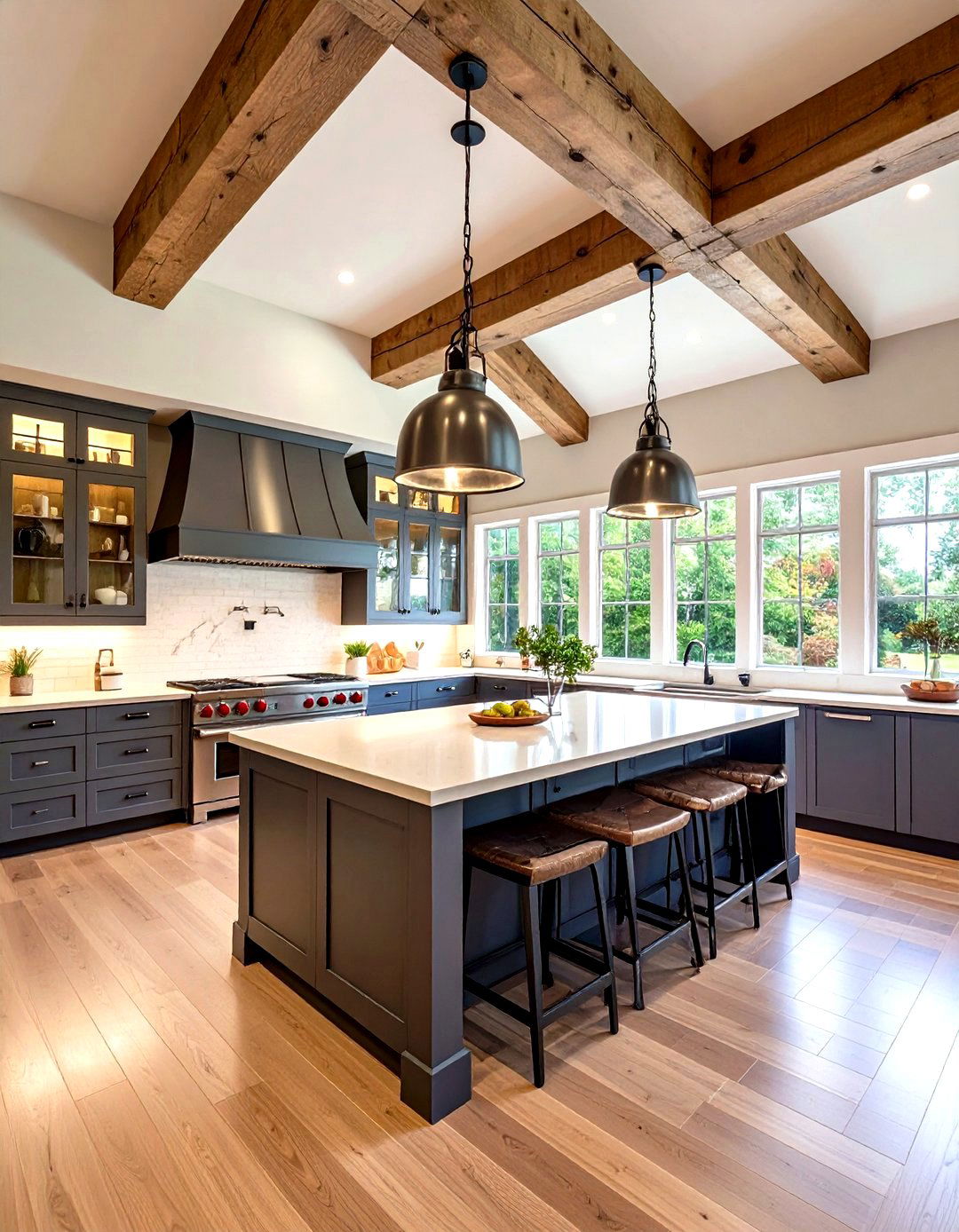
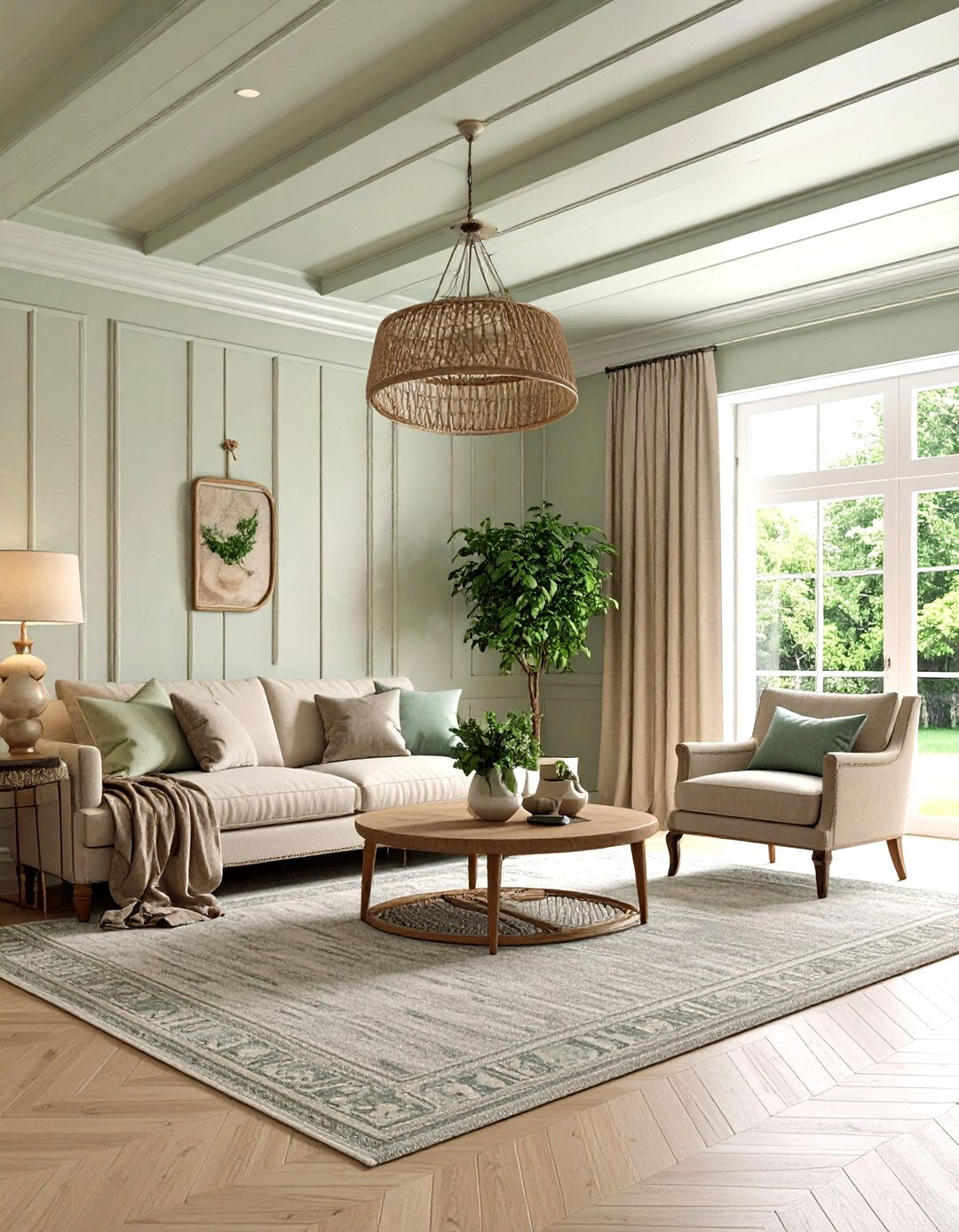
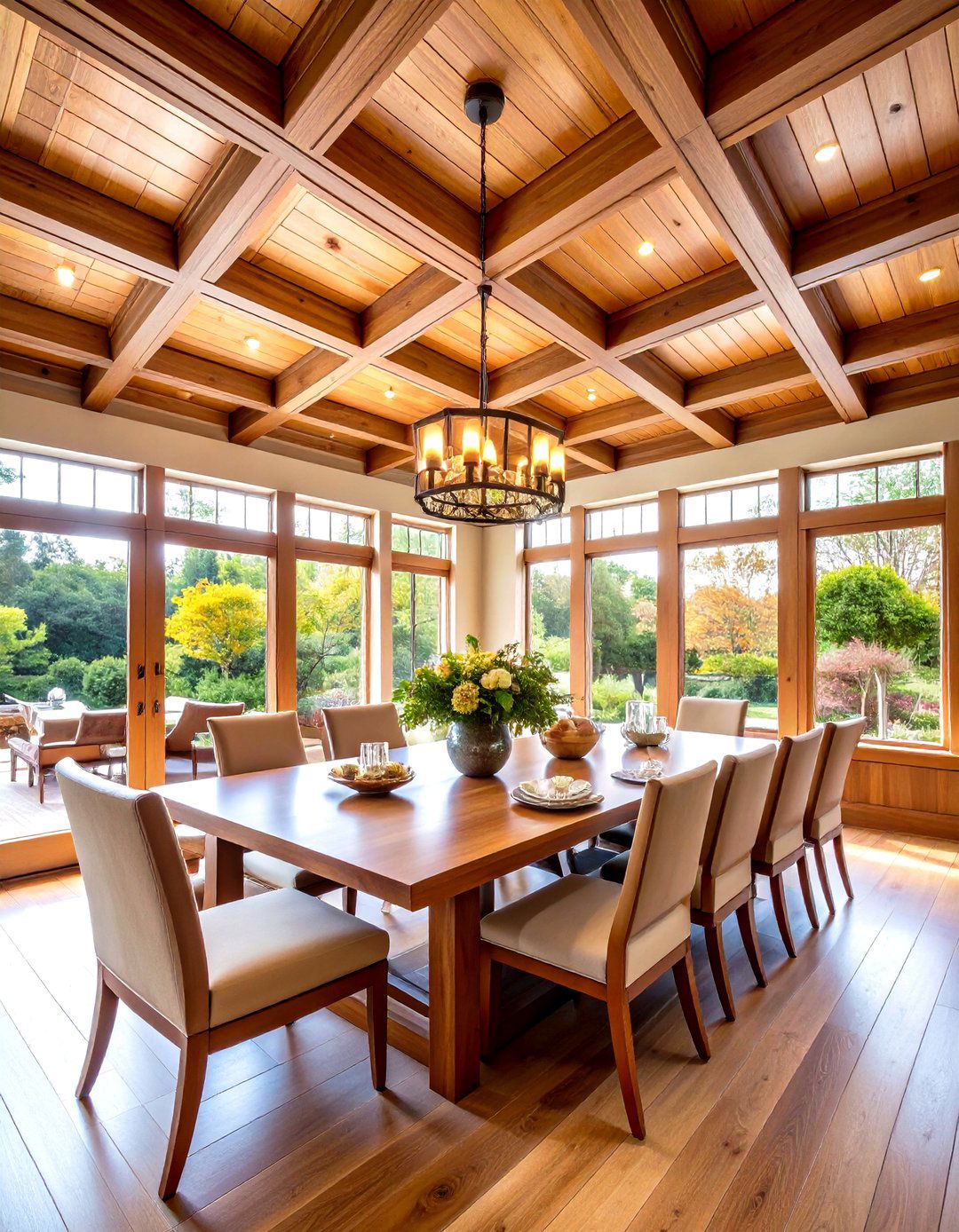
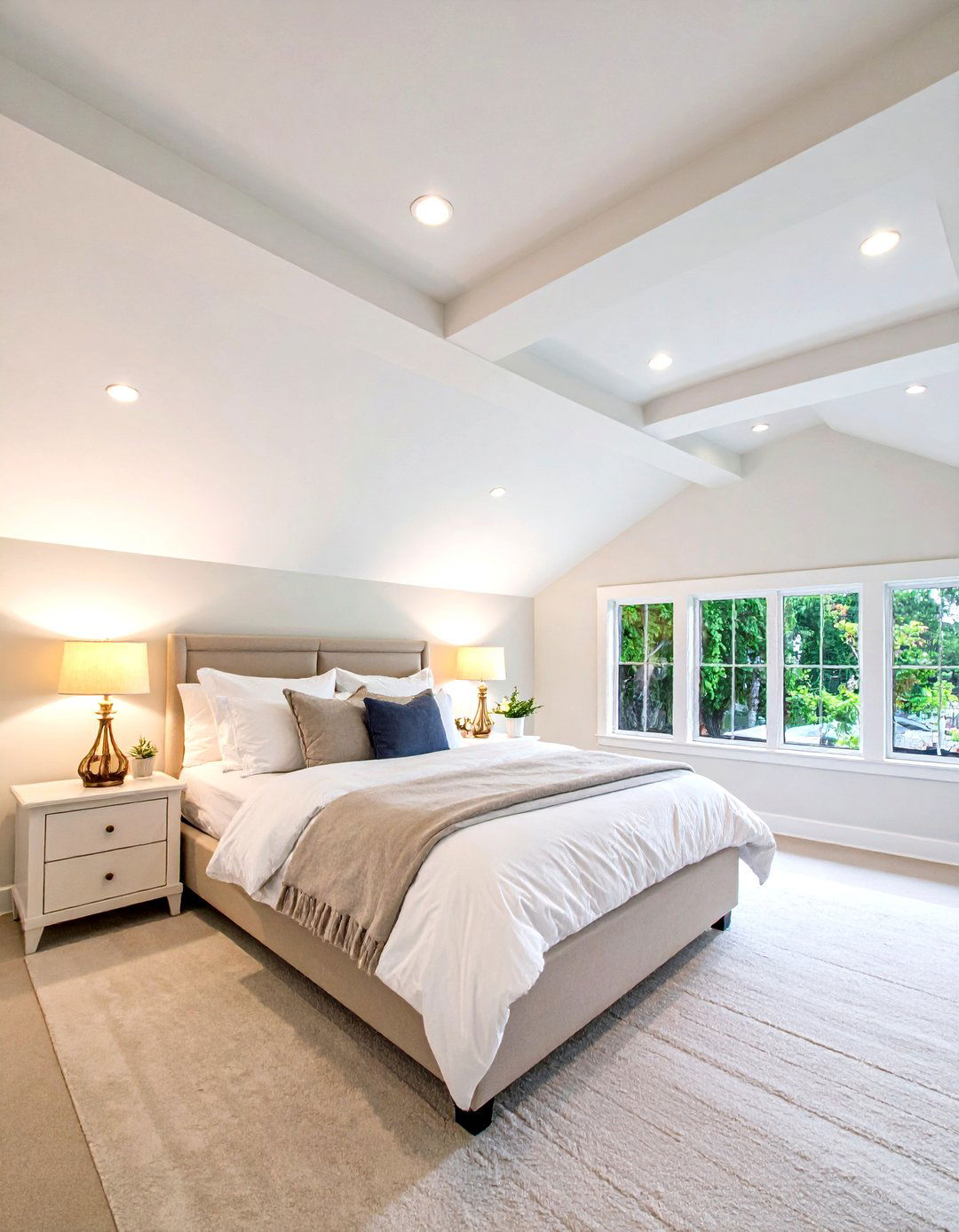
Leave a Reply